

Zitierweise / cite as:
Payer, Alois <1944 - >: Chronik Thailands = กาลานุกรมสยามประเทศไทย. -- Chronik 1960 / B. E. 2503. -- Fassung vom 2017-03-17. -- URL: http://www.payer.de/thailandchronik/chronik1960.htm
Erstmals publiziert: 2012-10-01
Überarbeitungen: 2017-03-17 [Ergänzungen] ; 2016-12-28 [Ergänzungen] ; 2016-12-07 [Ergänzungen] ; 2016-09-23 [Ergänzungen] ; 2016-09-09 [Ergänzungen] ; 2016-08-29 [Ergänzungen] ; 2016-05-02 [Ergänzungen] ; 2016-03-17 [Ergänzungen] ; 2016-02-12 [Ergänzungen] ; 2016-01-17 [Ergänzungen] ; 2016-01-06 [Ergänzungen] ; 2015-12-06 [Ergänzungen] ; 2015-10-02 [Ergänzungen] ; 2015-09-26 [Ergänzungen] ; 2015-06-01 [Ergänzungen] ; 2015-04-27 [Ergänzungen] ; 2014-11-25 [Ergänzungen] ; 2014-10-30 [Ergänzungen] ; 2014-10-12 [Ergänzungen] ; 2014-10-06 [Ergänzungen] ; 2014-09-15 [Ergänzungen] ; 2014-04-01 [Ergänzungen] ; 2013-12-02 [Ergänzungen] ; 2013-11-20 [Ergänzungen] ; 2013-10-08 [Ergänzungen] ; 2013-09-26 [Ergänzungen] ; 2013-09-16 [Ergänzungen] ; 2013-08-24 [Ergänzungen] ; 2013-06-21 [Ergänzungen] ; 2013-03-27 [Ergänzungen] ; 2013-01-23 [Ergänzungen] ; 2013-01-12 [Ergänzungen]
©opyright: Dieser Text steht der Allgemeinheit zur Verfügung. Eine Verwertung in Publikationen, die über übliche Zitate hinausgeht, bedarf der ausdrücklichen Genehmigung des Herausgebers.
Dieser Text ist Teil der Abteilung
Thailand von
Tüpfli's Global Village Library
ช้างตายทั้งตัวเอาใบบัวปิดไม่มิด
|
Gewidmet meiner lieben Frau Margarete Payer die seit unserem ersten Besuch in Thailand 1974 mit mir die Liebe zu den und die Sorge um die Bewohner Thailands teilt. |
|
Bei thailändischen Statistiken muss man mit allen Fehlerquellen rechnen, die in folgendem Werk beschrieben sind:
Die Statistikdiagramme geben also meistens eher qualitative als korrekte quantitative Beziehungen wieder.
|
Statistische Daten 1960:
|
1960 - 1962-06-17

Somdet Phra Ariyavongsagatanana (Plod Kittisobhaṇa) - สมเด็จพระอริยวงศาคตญาณ สมเด็จพระสังฆราช (ปลด กิตฺติโสภณ) (1889 - 1962) ist Sangharaja (สังฆราช). Geburtsname: Plod Ketuthat - ปลด เกตุทัต
Abb.: Somdet Phra Ariyavongsagatanana (Plod Kittisobhaṇa) - สมเด็จพระอริยวงศาคตญาณ สมเด็จพระสังฆราช (ปลด กิตฺติโสภณ) als junger Mönch oder Novize
[Bildquelle: th.Wikipedia. -- Public domain]
1960

Rede von Ministerpräsident Sarit vor höheren Beamten der Ordenshierarchie:
"Ich möchte an den Orden appellieren, der Regierung zu helfen. Der Orden verfügt dabei über verschiedene Möglichkeiten, wenn er nur bereit ist, Hand in Hand mit der Regierung zu wirken. Diese Regierung ist eine Revolutionsregierung. Gelehrte des buddhistischen Dhamma haben mir erklärt, dass der Buddha selbst der größte Revolutionär der Welt war. Er hat den menschlichen Geist revolutioniert, indem er den leichtfertigen Glauben an Götter wie Indra und Brahma beseitigte und das karmische Denken einführte, d. h. das Prinzip von den guten und schlechten Taten... Die Revolution, die ich und die gegenwärtige Regierung gerade einleiten, hat ein ähnliches Ziel: den Aufbau günstiger Lebensverhältnisse für die Bevölkerung. Verschiedene Projekte, die allein dem Wohlergehen des Volkes dienen, müssen verwirklicht werden. Aber die Welt von heute ist anders geworden, als es die Welt von gestern war. Die Bewohner der Erde haben sich vervielfacht. Und die Erträge der Natur sind geringer geworden. Es ist notwendig, die menschliche Produktivität zu erhöhen. Man muss für den Lebensunterhalt arbeiten. Ein schönes Leben zu führen ohne zu arbeiten, sich nur auf andere zu verlassen und dabei deren Arbeitskraft auszubeuten, das wird immer schwerer. Die Wahrheit jenes Prinzips des Buddha, wonach jeder auf sich selbst beruhen muss, wird immer deutlicher erkennbar. Beharrlichkeit, Fleiß und Zähigkeit, welche die Lehre des Buddha kennzeichnen, sind moralische Vorstellungen, die viel stärker angewandt werden müssen. Besonders was die Wirtschaftspläne betrifft, die von der Regierung... konzipiert wurden, da müssen mehr Fleiß, Beharrlichkeit und Zähigkeit eingesetzt werden sowie eine geistige Einstellung, die auf sich selbst beruht. Dies gilt ebenso für den privaten Bereich wie für das gemeinsame Wohl der Nation. Denn unsere Thai-Nation muss es erreichen, künftig auf sich selbst zu beruhen (selbständig zu sein).
Darum möchten ich und die Regierung bitten: Den Dhamma, die Lehre des Buddha, bietet verschiedene Möglichkeiten, um den Geist der Menschen zum Handeln zu entzünden. Es gibt eine Lehre, die die Menschen unambitiös und zufrieden macht mit dem, was sie haben. Daraus folgt, dass sie nichts arbeiten und nichts erlangen möchten. Nach dieser Lehre ist es nicht notwendig, nach etwas zu streben. Denn wenn man stirbt, kann man es ja nicht mitnehmen. Eine solche Lehre mag für ein gewisses Zeitalter angemessen gewesen sein. Aber für das revolutionäre Zeitalter, welches um den Fortschritt ringt, ist sie nicht richtig. Deshalb ist es notwendig, aus der buddhistischen Lehre jene Teile auszuwählen, die den Menschen Mut, Fleiß und Beharrlichkeit lehren, die sie zu rechtem Lebensunterhalt anleiten und davon abhalten, nachlässig zu sein und auf andere zu hoffen. Vielmehr sollen sie auf sich selbst beruhen... Ich möchte daher an den Orden appellieren, den Versuch zu unternehmen, den Menschen einen solchen Weg zu lehren. Dies wäre eine Hilfe für die wirtschaftlichen Zielsetzungen und die Politik der gegenwärtigen Revolutionsregierung. Ihr Ziel, nämlich die stetige Entwicklung der Nation, bedeutet auch die stetige Entwicklung im religiösen Bereich".
[Übersetzung: Skrobanek, Walter <1941 - 2006>: Buddhistische Politik in Thailand : mit besonderer Berücksichtigung des heterodoxen Messianismus. -- Wiesbaden : Steiner, 1976. -- 315 S. ; 24 cm. -- (Beiträge zur Südasienforschung ; 23). -- ISBN 3-515-02390-9. -- Zugl.: Heidelberg, Univ., Diss., 1972. -- S. 239ff. -- Mit Erlaubnis des inzwischen verstorbenen Autors]
1960
Aus einer Rede von Ministerpräsident Sarit:
"The Prime Minister is the father of the largest family, bears the greatest responsibility and has to look after the well-being of his fraternal countrymen most closely." Übersetzung: Kasian Tejapira [เกษียร เตชะพีระ] <1957 - >. -- In: Traveling nation-makers : transnational flows and movements in the making of modern Southeast Asia / ed. by Caroline S. Hau [1969 - ] and Kasian Tejapira [เกษียร เตชะพีระ, 1957 - ]. -- Singapore : NUS, 2011. -- 310 S. : Ill. ; 23 cm. -- (Kyoto CSEAS series on Asian studies ; 3). -- ISBN 9-789971-695477. -- S. 202. -- Fair use]
1960
Bevölkerungsdichte
Abb.: Bevölkerungsdichte 1960
[Bildquelle: Area handbook for Thailand / co-authors: Harvey H. Smith [1892 - ] [u. a.]. -- Washington : U.S. Govt. Print. Off., 1968. -- 558 S. ; 24 cm. -- (American University foreign area studies). -- S. 64]
1960 - 2000
Müttersterblichkeit:
Abb.: Müttersterblichkeit 1960 - 2000
[Bildquelle: Nachrichten aus der ärztlichen Mission / Difäm. -- 2 (2012). -- S. 4]
1960
Alterspyramide gemäß Volkszählung:
Abb.: Alterpyramide gemäß Volkszählung 1960 (in 1000 EW)
[Datenquelle: Mitchell (1982), S. 60]
1960
Bildung einer Regierungskommission zur Entwicklung Nordostthailands. Vorsitz: Sarit.
1960
Es erscheint die erste bodenkundliche Karte ganz Thailands. Sie wurde seit 1937 von dem US-Bodenkundler Robert Larimore Pendleton (1890 - 1957), dem Filipino Sarot Montrakun und dem Thai Rerm Buranalerk erarbeitet.
Abb.: Karte der Böden Thailands, 1960
[Bildquelle: http://www.fao.org/fileadmin/user_upload/GSP/docs/Presentation_china_feb2012/Potichan.pdf. -- Zugriff am 2013-12-02. -- Fair use]
1960
Wildlife Conservation Act
1960
Inland-Wasserstraßen:
"Inland Water Transport Thailand is a land of rivers and canals. The total length of its extensive inland waterway system is about 9,180 kilometers of varying depths. Over 10 million people of the total population of about 28 million ( 1962) live on or along these waterways, using boats as their principal means of carrying rice, vegetables, fruits, fish, charcoal, and other necessities of life. Along the banks of the rivers and canals are situated most of the 6,000 rice mills in the country. Over 80 per cent of the paddy produced is transported by water to these mills. Every year some 200,000 logs are floated down the rivers in rafts during the flood season. Bulk cargo such as petroleum, cement, and construction materials like brick, sand and gravel, also move largely by water because this is the cheapest form of transportation.
At present, inland shipping is being operated through 30 different routes. Most of the boats used in inland shipping are owned by unregistered individuals and partnerships, whilst the rest are operated by a few large registered companies.
Statistics of the Harbour Department for the year 1960 indicated that there were 13,612 registered boats used in inland shipping with a total gross tonnage of 131,483 tons."
[Quelle: Thailand official year book 1964. -- S. 352f.]
Abb.: Lastkahn, Chao Phraya (แม่น้ำเจ้าพระยา), 2007
[Bildquelle: Luca. -- http://www.flickr.com/photos/lucagorlero/517804739/. -- Zugriff am 2012-03-20. -- Creative Commons Lizenz (Namensnennung)]
Abb.: Flusssysteme Thailands
[Bildquelle: Wikipedia. -- Public domain]
1960 / 1980
Analphabeten nach Altersgruppen:
Abb.: Analphabeten in Prozent der jeweiligen Altergruppe 1960 und 1980
[Datenquelle: Länderbericht Thailand 1993, S. 44]
Abb.: Für einen großen Teil der älteren Generation noch unbekannt: Buchstabiertafel ก.ไก่ สำหรับคุฌหนู, ca. 1975
1960



Abb.: Religionszugehörigkeit (in Prozent) 1960
[Datenquelle: Bechert (1973), S. 603]
Abb.: Tonson-Moschee (มัสยิดต้นสน), Bangkok, 2008
[Bildquelle: Andreas Bossard. -- http://www.flickr.com/photos/greenbird_ontree/2765203119/. -- Zugriff am 2012-02-19. -- Creative Commons Lizenz (Namensnennung, keine kommerzielle Nutzung, share alike)]
Abb.: Interreligiöses Heiligtum Tham Phra Nang, Railay (อ่าวไร่เลย์), Provinz Krabi (กระบี่), 2008
[Bildquelle: Giuseppe Bognanni. -- http://www.flickr.com/photos/79286287@N00/2314364883/. -- Zugriff am 2012-02-19. -- Creative Commons Lizenz (Namensnennung)]
Abb.: Lage von Railay (อ่าวไร่เลย์)
[Bildquelle: OpenStreetMap. -- Creative Commons Lizenz (Namensnennung, share alike)]
1960
Es erscheint:
Chakra Hansakul [หาญสกุล] <1929 - >: A study of pay policy and administration in the Thai Civil Service. -- Bangkok, B.E. 2502 [1960]. -- 228 Bl. : Ill. -- M.A. Thammasat University
"A third class civil official . . . , holding a bachelor’s degree and a certificate equivalent to a master’s degree, having received total salary at 1,100 baht per month, had to live with priests in a monastery, ate cheap food at a street-side stall three meals a day or sometimes (nearly the end of the month) only two, dressed with only plain or sometimes a worn-out shirt and trousers, had no hope of having a family, and seldom had a chance for recreation. He was lucky that he was never sick." [Zitiert in: Siffin, William J. <1922 - 1993>: The Thai bureaucracy: institutional change and development. -- Honolulu : East-West Center, 1966. -- 291 S. ; 24 cm. -- S. 228f. -- Fair use]
1960
Gründung des Bangkok Art Center, Thailands erster privater Kunstgalerie. Gründer: Samak Charoenrat (สมัคร เจริญราษฎร์), Damrong Wong-upparat, Wilas Maneewat unter Beratung von Silpa Bhirasri (ศิลป์ พีระศรี, aka Corrado Feroci, 1892 - 1962)
1960

Eröffnung von Mae Rim (แม่ริม) Camp zur Ausbildung von Führungspersonal der Border Patrol Police (ตำรวจตระเวนชายแดน) unter der Anleitung durch U.S. AID Public Safety Advisors. Später übernehmen U.S. Army Special Forces das Lager zur Ausbildung von Thai special rangers.
Abb.: Lage von Mae Rim (แม่ริม)
[Bildquelle: OpenStreetMap. -- Creative Commons Lizenz (Namensnennung, share alike)]
1960


Es erscheint:
Lightwood, Teresa: Teresa of Siam. -- London : Cassell, 1960. -- 189 S. : 21 cm. -- erscheint gleichzeitig New York : Dutton u.d.T. My three lives. -- Auf dem Einbandtitel: "She faced the cruelty and squalor of a backward land with courage and devotion torn between obedience to her vows and the convictions of herheart."
Abb.: Einbandtitel der Taschenbuchausgabe 1961
"Western influences had not yet in those days transformed the graceful Siamese woman into a replica of the European fashion-magazine reader. In 1928 women and girls throughout the capital still wore the pah-nung [ผ้านุ่ง], the trouser skirt favoured by men and women alike: about four yards of material wound tightly round the body, draped between the legs and fastened high at the rear. In front it covered the knees, but the thighs were revealed at the back, and above the waist there was nothing. With my rigid code of convent modesty behind me—a code which forbade the nun even to undress in the presence of another sister—the sight of this woman naked to the waist and talking casually with a young man on the public highway was disturbing to say the least. True, it was not long before the beauty of olive skins and the bodies that moved without artifice began to impress me. But on that day, cluttered as I was by bony stays, a long-sleeved shift and serge petticoats, I failed to appreciate the natural graces. I was in fact outraged."
[a.a.O., S. 27f.]
"In the same way I found the priests markedly overconservative about the design of Bangkok’s newest church [วัดพระมหาไถ่ - Holy Redeemer Church] - . This was a fine edifice built by the American Redemptorist fathers, who boldly and aptly decided to construct the church in a modern Thai style rather than on the conventional lines of European houses of worship. The failure of the French- dominated Catholic community to move with the times was perfectly illustrated in the hot controversy that was thrown up by this architectural innovation. Everything in and about the church was designed with clear pure lines, almost streamlined, and with tremendous dignity and power. All in the Thai style. A Christian temple of the 1950s, if ever there was one. The paintings and murals, the doorways, the altar, even the monstrance, the vessel of gold or silver in which consecrated bread is placed, were of up-to-date Thai design.
The priests with whom I habitually argued were horrified when they heard the details of the American-built church. ‘It looks like a latter-day Buddhist temple,’ said one. ‘They will never persuade me to enter it,’ said another. And controversy over this gem of a church was also raging in the newspapers.
When I told the priests that the Christian faith did not have to show Western trappings everywhere, suggested that Thai architecture was a brilliant idea for the new building, and finally asked, ‘What makes a church—is it the stone, or the Presence? ’ several of a more conservative hue virtually accused me of blasphemy. I noticed, all the same, that one priest who swore he would never enter the place had put himself well to the fore of the locally distinguished congregation at the blessing of the new church."
[a.a.O., S. 159]
Abb.: วัดพระมหาไถ่ - Holy Redeemer Church, Bangkok, 2013
[Bildquelle: Iloilo Wanderer / Wikimedia. -- Creative Commons Lizenz (Namensnennung, share alike)]
Abb.: Lage der Holy Redeemer Church (วัดพระมหาไถ่)
[Bildquelle: OpenStreetMap. -- Creative Commons Lizenz (Namensnennung, share alike)]
1960 - 1991
White Collar Arbeitskräfte:
Abb.: White Collar Arbeitskräfte in Prozent der gesamten Arbeitskräfte, 1960 - 1991
[Datenquelle: Phongpaichit / Baker (1995), S. 369]
Abb.: White Collar Öffentlicher Dienst: Wahlplakat der Democrat Party (พรรคประชาธิปัตย์) mit Kandidaten des Öffentlichen Diensts, 2007
[Bildquelle: Timo Kozlowksi. -- http://www.flickr.com/photos/timokl/2140549764/. -- Zugriff am 2012-02-05. -- Creative Commons Lizenz (Namensnennung, keine kommerzielle Nutzung, share alike)]
1950 - 1964
Weltmarktpreise für Reis:
Abb.: Durchschnittlicher Weltmarktpreis für Reis (in $ pro Tonne)
[Datenquelle: IRRI]
1959 - 1969
Promotion Certificates für Firmen:
Abb.: Promotion Certificates (Steuerprivilegien usw.) des Board of Investment für Firmen 1959 - 1969 nach Sparten. Alle aufgezählten Firmen nahmen zwischen 1960 und 1969 den Betrieb auf
[Datenquelle: Ingram (1971), S. 293]
1936 - 1969
Zivilluftfahrt:
Abb.: Zivilluftfahrt: Passagiere (in 1000-km), Fracht (in 1000-Tonnen-Kilometern) und Post (in 1000-Tonnen Kilometern), 1936 - 1969
[Datenquelle: Mitchell (1982), S. 584]
Abb.: Thai International Caravelle, Stockholm, 1970
[Bildquelle: Lars Söderström / Wikipedia. -- GNU FDLicense]
196x
Gründung der Ngiu Thammasat Theatertruppe (งิ้วธรรมศาสตร์) zur Aufführung der chinesischen Teochew-Operngattung Ngiu (戲曲).
Abb.: Plakat, 2008
[Fair use]
Abb.: Plakate, 2014
[Fair use]
1960

Die Bundesrepublik Deutschland entsendet an ihre Botschaft in Bangkok erstmals einen Militärattaché.
1960 - 1962

Thai-Danish Prehistoric Expedition erforscht die Steinzeit in der Provinz Kanchanaburi (กาญจนบุรี).
Abb.: Lage der Provinz Kanchanaburi (กาญจนบุรี)
[Bildquelle: OpenStreetMap. -- Creative Commons Lizenz (Namensnennung, share alike)]Die Ergebnisse sind veröffentlicht in:
Thai-Danish Prehistoric Expedition (1960-1962): Archaeological excavations in Thailand. -- Copenhagen, Munksgaard, 1967-<1988 >
Bd. 1: Sai-Yok [ไทรโยค] : stone-age settlements in the Kanchanaburi province, by H. R. van Heekeren [1902 - 1974]] and E. Knuth.
Bd. 2: Ban-Kao [บ้านเก่า] : neolithic settlements with cemeteries in the Kanchanaburi Province,Teil 1: The archaeological material from the burials by P. Sørensen, with a contribution by T. Hatting.
Teil 2 (= Bd. 3): The prehistoric Thai skeletons, by Sood Sangvichien, P. Sirigaroon, and J. B. Jøorgensen
with appendix: The Mesolithic skeletal remains from Sai-Yok, by T. Jacob.--Bd. 4: Surface finds and minor excavations / edited by Per Sørensen
Abb.: Lage von Sai Yok (ไทรโยค)
[Bildquelle: OpenStreetMap. -- Creative Commons Lizenz (Namensnennung, share alike)]
Abb.: Lage von Ban-Kao (บ้านเก่า)
"Ban Kao (Thai: บ้านเก่า) ist eine Dorfgemeinde in Amphoe Mueang Kanchanaburi, Provinz Kanchanaburi (กาญจนบุรี), im Westen von Zentralthailand. Der Ort ist bekannt durch die erste archäologische Ausgrabung von Hügelgräbern in Thailand. Die erste Ausgrabung führte eine thailändisch-dänische Expedition 1961/62 unter Per Sørensen an einem Hügel durch, wo vorher bereits viele Tonscherben und Steinbeile gefunden worden waren. Man öffnete eine Fläche von fast 400 m²[1], die sich als Stätte von Erdbestattungen herausstellte und heute eine der wichtigsten Quellen zum Wissen über das prähistorische Thailand darstellt. Nach und nach wurden 44 Gräber gefunden, in denen die Toten auf dem Rücken liegend ausgestreckt und mit Beigaben versehen bestattet worden waren. Unter diesen befanden sich Tongefäße, Steinbeile und Schmuck aus Muschelschalen. Nach der Radiokohlenstoffdatierung war die Siedlung zwischen 2300 und 1500 v. Chr. besiedelt[2].
EinzelnachweiseLiteratur
- ↑ Higham und Thosarat (1998), S. 76
- ↑ P. Soerensen und T. Hatting: Archaeological investigations in Thailand II. Ban Kao I: The archaeological material from the burials. Copenhagen 1967.
- Charles Higham und Rachanie Thosarat: Prehistoric Thailand : from early settlement to Sukhothai. Bangkok: River Books 1998. ISBN 9748225305."
[Quelle: http://de.wikipedia.org/wiki/Ban_Kao. -- Zugriff am 2012-04-30]
1960
Unter dem Self-Help Land Settlement Programme von 1940 werden vier Pilot-Settlements (Sesshaftmachung) für Bergvölker begonnen:
- Doi Muser (ดอยมูเซอ), Provinz Tak (ตาก)
- Doi Chiang Dao (ดอยเชียงดาว), Provinz Chiang Mai (เชียงใหม่)
- Doi Monsanjo, Provinz Chiang Rai (เชียงราย)
Doi Phu Lom Lo (ภูลมโล), für die Provinzen Phetchabun (เพชรบูรณ์), Phitsanulok (พิษณุโลก) und Loei (เลย)
1967 wohnen in diesen Siedlungen 3064 Personen. Sie haben 87 km Straßen, 4 Schulen und 5 Gesundheitszentren. Der Anbau von Kaffee und Tee wird gefördert.
Abb.: Lage von Doi Muser (ดอยมูเซอ)
[Bildquelle: OpenStreetMap. -- Creative Commons Lizenz (Namensnennung, share alike)]
Abb.: Lage von Doi Chiang Dao (ดอยเชียงดาว)
[Bildquelle: OpenStreetMap. -- Creative Commons Lizenz (Namensnennung, share alike)]
Abb.: Lage von Doi Phu Lom Lo (ภูลมโล)
[Bildquelle: OpenStreetMap. -- Creative Commons Lizenz (Namensnennung, share alike)]
Abb.: Dorf eines sesshaft gemachten Bergvolks (nicht unbedingt durch das Settlement programme), Chiang Mai, 2009
[Bildquelle: Katy Rowlings. -- http://www.flickr.com/photos/ktrawlings/4349991242/. -- Zugriff am 2012-03-16. -- Creative Commons Lizenz (Namensnennung, keine Bearbeitung)]
ca. 1960

Bei Krabi (กระบี่) gründet der Mönch Jumnean Seelasettho (จำเนียร สีลเสฏโฐ, 1944 - ) das Meditationskloster Wat Tham Sua (วัดถ้ำเสือ) (Tiger Cave Temple).
Abb.: Lage von Krabi (กระบี่)
[Bildquelle: OpenStreetMap. -- Creative Commons Lizenz (Namensnennung, share alike)]Klicken Sie hier, um ein mp4-Video von 2012 über Wat Tham Sua (วัดถ้ำเสือ) (Tiger Cave Temple) zu sehen
[Quelle des Videos: Florian Blümm. -- http://www.flickr.com/photos/49108554@N07/6880115719/. -- Zugriff am 2012-05-03. -- Creative Commons Lizenz (Namensnennung, keine kommerzielle Nutzung, share alike)]
1960
Abb.: Reklame für ®Tampax
[Bildquelle: Chronicle of Thailand : headline news since 1946 / ed. in chief Nicholas Grossman. -- Bangkok : Bangkok Post, 2010. -- ISBN 978-981-4217-12-5.-- S. 111. -- Fair use.]
Abb.: Anzeige für einen Kerosin-betriebenen Kühlschrank
[Bildquelle: Chronicle of Thailand : headline news since 1946 / ed. in chief Nicholas Grossman. -- Bangkok : Bangkok Post, 2010. -- ISBN 978-981-4217-12-5.-- S. 111. -- Fair use.]
1960
Es erscheint der Song
พร ภิรมย์ [Phon Phirom, 1928 - 2010]: บัวตูมบัวบาน ["Lotusknospe, Lotusblüte"]
Der Song auf Spotify:
URI: spotify:track:46LiM4eNjUr5CFPmJaA68s
URL: https://open.spotify.com/track/46LiM4eNjUr5CFPmJaA68s
Abb.: Cover einer späteren Ausgabe auf CD
1960
Es erscheint:
Dhanit Yupho [ธนิต อยู่โพธิ์] <1907 - 1968>: Thai musical instruments / translated from the Thai by David Morton [1920 - 2004]. -- Bangkok : Phorn, 1960. -- 104 S. : Ill. ; 23 cm
Abb.: Einbandtitel
1958 - 1960

Der US-Musikethnologe David Morton (1920 - 2004) lässt die ganze Sammlung an Notationen klassischer siamesischer Musik mikroverfilmen, die auf Anregung von Prinz Damrong Rajanubhab (สมเด็จพระเจ้าบรมวงศ์เธอ พระองค์เจ้าดิศวรกุมาร กรมพระยาดำรงราชานุภาพ, 1862 -1943) seit Ende der 1930er Jahre angelegt wurde. Diese Mikrofilme befinden sich im Institute of Ethnomusicology der University of California Los Angeles (UCLA).
1960
Abb.: Postkarten-Bücher, ca. 1960
[Bildquelle: Adaptor-Plug. -- http://www.flickr.com/photos/11401580@N03/3789162210/. -- Zugriff am 2011-12-01. -- Creative Commons Lizenz (Namensnennung, keine kommerzielle Nutzung)]
1960

In London erscheint die Hagiographie:
Chula Chakrabongse <จุลจักรพงษ์, 1908 - 1963>: Lords of life : the paternal monarchy of Bangkok, 1782-1932. With the earlier and more recent history of Thailand. -- London : Redman, 1960. -- 352 S. : Ill.
Abb.: Titelblatt
1960
Es erscheint der Roman:
ชูวงศ์ ฉายะจินดา [Chuwong Chayachinda] <1930 - >: จำเลยรัก
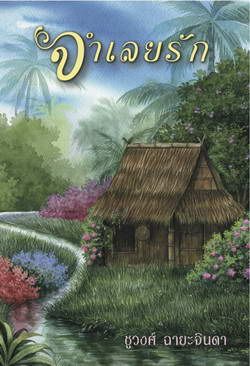
Abb.:
Einbandtitel einer Neuausgabe
|
"Jam Loey Rak (Thai: จำเลยรัก; RTGS: Chamloei Rak) is a 1960 novel by Chuwong Chayachinda (วงศ์ ฉายะจินดา, 1930 - ) which has been adapted for two movies and five television series. PlotThe story of Soorya (โศรยา) whose life changed when she was kidanpped by Harit Rangsiman (หฤษฏิ์), a landowner who mistakes her for her cousin who caused his brother's death. Humiliated and forced to work, Soorya strikes up a friendship with a deaf and dumb man who was also a victim of Harit's crulety. Harit realisesd his mistake and releases Soorya, but only to allow him to spy on her cousin, which leads to her downfall. Film, TV or theatrical adaptationsJam Loey Rak which has been adapted for two movies and five television series.
[Quelle: http://en.wikipedia.org/wiki/Jam_Loey_Rak. -- Zugriff am 2013-03-27] |
1960
Entdeckung der bisher ältesten bekannten Stoffmalerei (15./16. Jhdt.) in einem Stupa im Wat Dok-ngoen (วัดดอกเงิน), Amphoe Hot (ฮอด), Provinz Chiang Mai (เชียงใหม่). Die Malerei zeigt Buddhas Herabstieg vom Tavatimsa-Himmel (ดาวดึงส์).
Abb.: Lage von Hot (ฮอด)
[Bildquelle: OpenStreetMap. -- Creative Commons Lizenz (Namensnennung, share alike)]
1960
Briefmarken:
vor 1960


Der US-Geheimdienst CIA benutzt die Takhli (ตาคลี) Royal Thai Air Force Base als Stützpunkt zur Versorgung tibetischer Aufständischer.
Ab.: Lage von Takhli (ตาคลี) Royal Thai Air Force Base und Tibet
[Bildquelle: OpenStreetMap. -- Creative Commons Lizenz (Namensnennung, share alike)]
"Takhli (ตาคลี) Royal Thai Air Force Base was established in the 1950s as a RTAF base. It is known that in the late 1950s, the United States Central Intelligence Agency (CIA) used Takhli as operating base for CIA resupply of Tibetan freedom fighters in the late 1950s. CIA-operated C-130A Hercules transports flew men and supplies over Indian airspace, with the consent of Prime Minister Nehru(जवाहरलाल नेहरू, 1889 - 1964), for parachute drops into Communist Chinese-occupied Tibet." [Quelle: http://en.wikipedia.org/wiki/Takhli_Royal_Thai_Air_Force_Base. -- Zugriff am 2013-11-20]
Abb.: Militärtransporter C-130A Hercules, 1954
[Bildquelle: USN / Wikipedia. -- Public domain]
1960
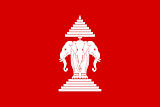
Thailändische Freiwillige, auch solche des Kavallerie-Battallion Bangkok, treten der laotischen Armee oder den neutalistischen laotischen Truppen bei. Sie tun dies vermutlich unabhängig von der theiländischen oder US Regierung vor allem aufgrund der besseren Bezehlung als bei thailändischen Streitkräften.
1960


Es erscheint:
Condominas, Georges <1921 - 2011>; Gaudillot, C.: La Plaine de Vientiane : rapport d'étude. -- Paris : Bureau pour le développement de la production agricole, 1960. -- 3 Bde. : Ill.
Abb.: Einbandtitel des Nachdrucks 2000
1960

Frankreich: Markteinführung von Metronidazol. "It is used either alone or with other antibiotics to treat pelvic inflammatory disease, endocarditis, and bacterial vaginosis. It is effective for dracunculiasis, giardiasis, trichomoniasis, and amebiasis. It is the drug of choice for a first episode of mild-to-moderate Clostridium difficile colitis." (Wikipedia)
Abb.: In Thailand hergestelltes Metronidazol
[Fair use]
1960

Es erscheint:
Rostow, W.W. (Walt Whitman) <1916 - 2003>: The stages of economic growth : a non-Communist manifesto. -- Cambridge [England] : University Press, 1960. -- 178 S. : Ill. ; 21 cm
Abb.: Umschlagtitel
"The Rostow's Stages of Economic Growth model is one of the major historical models of economic growth. It was published by American economist Walt Whitman Rostow (1916 - 2003) in 1960. The model postulates that economic growth occurs in five basic stages, of varying length:[1]
- Traditional society
- Preconditions for take-off
- Take-off
- Drive to maturity
- Age of High mass consumption
Rostow's model is one of the more structuralist models of economic growth, particularly in comparison with the 'backwardness' model developed by Alexander Gerschenkron (Александр Гершенкрон, 1904 – 1978), although the two models are not mutually exclusive.
Rostow argued that economic take-off must initially be led by a few individual sectors. This belief echoes David Ricardo's (1772 - 1823) comparative advantage thesis and criticizes Marxist revolutionaries' push for economic self-reliance in that it pushes for the 'initial' development of only one or two sectors over the development of all sectors equally. This became one of the important concepts in the theory of modernization in social evolutionism.
OverviewBelow is a detailed outline of Rostow's five stages:
- Traditional society
- characterized by subsistence agriculture or hunting and gathering; almost wholly a "primary" sector economy
- limited technology
- A static or 'rigid' society: lack of class or individual economic mobility, with stability prioritized and change seen negatively
- Pre-conditions to "take-off"
- external demand for raw materials initiates economic change;
- development of more productive, commercial agriculture and cash crops not consumed by producers and/or largely exported
- widespread and enhanced investment in changes to the physical environment to expand production (i.e. irrigation, canals, ports)
- increasing spread of technology and advances in existing technologies
- changing social structure, with previous social equilibrium now in flux
- individual social mobility begins
- development of national identity and shared economic interests
- Take off
- Urbanization increases, Industrialization proceeds, Technological break through occurs
- the "secondary" (goods-producing) sector expands and ratio of secondary vs. primary sectors in the economy shifts quickly towards secondary
- textiles and apparel are usually the first "take-off" industry, as happened in Great Britain's classic "Industrial Revolution"
- Drive to maturity
- diversification of the industrial base; multiple industries expand and new ones take root quickly
- manufacturing shifts from investment-driven (capital goods) towards consumer durables and domestic consumption
- rapid development of transportation infrastructure
- large-scale investment in social infrastructure (schools, universities, hospitals, etc.)
- Age of mass consumption
- the industrial base dominates the economy; the primary sector is of greatly diminished weight in economy and society
- widespread and normative consumption of high-value consumer goods (e.g. automobiles)
- consumers typically (if not universally), have disposable income, beyond all basic needs, for additional goods
Rostow claimed that these stages of growth were designed to tackle a number of issues, some of which he identified himself; and wrote, "Under what impulses did traditional, agricultural societies begin the process of their modernization? When and how did regular growth become a built-in feature of each society? What forces drove the process of sustained growth along and determined its contours? What common social and political features of the growth process may be discerned at each stage? What forces have determined relations between the more developed and less developed areas; and what relation if any did the relative sequence of growth bear to outbreak of war? And finally where is compound interest taking us? Is it taking us to communism; or to the affluent suburbs , nicely rounded out with social overhead capital; to destruction; to the moon; or where?"[2][3]
Rostow asserts that countries go through each of these stages fairly linearly, and set out a number of conditions that were likely to occur in investment, consumption and social trends at each state. Not all of the conditions were certain to occur at each stage, however, and the stages and transition periods may occur at varying lengths from country to country, and even from region to region."
[Quelle: https://en.wikipedia.org/wiki/Rostow's_stages_of_growth. -- Zugriff am 2016-03-16]
1960

USA: Gründung von Students for a Democratic Society (SDS)
"Students for a Democratic Society (SDS, Studenten für eine demokratische Gesellschaft) nannte sich eine Studentenorganisation in den USA. 1960 gegründet, waren sie Teil der New Left, die einen Grundstein der Studentenbewegung in den Sechziger Jahren bildete. Sie unterstützten die auf rechtliche Gleichheit plädierende Bürgerrechtsbewegung. Mit dem Vietnamkrieg wurden sie der Hauptanlaufpunkt für protestierende Studenten. Mit der Antikriegs-Aktivität kam es zu einer zunehmenden Radikalisierung der Studentenbewegung, und nachdem sich militante Gruppen abgespalten hatten, zerfiel die SDS im Jahr 1969.
Die Positionen der SDS sind in der auf einem Entwurf von Tom Hayden (1939 - ) basierenden Port-Huron-Erklärung niedergelegt, die am 11. Juni 1962 in Port Huron verabschiedet wurde."
[Quelle: https://de.wikipedia.org/wiki/Students_for_a_Democratic_Society. -- Zugriff am 2015-08-11]
1960

Hawaii (USA): East–West Center (EWC) / Center for Cultural and Technical Interchange Between East and West. In der Folgezeit kommen über 3.000 Thais in den Genuss von Programmen des EWC.
Abb.: ®Logo
"The East-West Center promotes better relations and understanding among the people and nations of the United States, Asia, and the Pacific through cooperative study, research, and dialogue. Established by the U.S. Congress in 1960, the Center serves as a resource for information and analysis on critical issues of common concern, bringing people together to exchange views, build expertise, and develop policy options. The Center is an independent, public, nonprofit organization with funding from the U.S. government, and additional support provided by private agencies, individuals, foundations, corporations, and governments in the region.
Over more than fifty years of serving as a U.S.-based institution for public diplomacy in the Asia Pacific region with international governance, staffing, students, and participants, the Center has built a worldwide network of 62,000 alumni and more than 950 partner organizations.
The Center’s 21-acre Honolulu campus, adjacent to the University of Hawai‘i at Mānoa, is located midway between Asia and the U.S. mainland and features research, residential, and international conference facilities. The Center’s Washington, D.C., office focuses on preparing the United States for an era of growing Asia Pacific prominence."
[Quelle: http://www.eastwestcenter.org/about-ewc/mission-and-organization. -- Zugriff am 2015-04-27]
1960-01

Ein Mönch wird verhaftet, weil er einen Kissenbezug mit einem roten Stern und der Thai-Aufschrift "Ich liebe Kommunismus" hatte.
1960-01


USAF Maj. Harry "Heinie" Aderholt (1920 - 2010) plant von Takhli aus die geheimen US Landeplätze in Laos
"Covert sites of the Laotian Civil War were clandestine U.S. military installations for conducting covert paramilitary and combat operations in the Kingdom of Laos. Airstrips within the Kingdom of Laos were originally designated by Air America as "Site XX" (with XX being a number). In September 1961, the designation changed to "VS XX", meaning "Victor Site XX". On 16 May 1964, the airstrips received their final designation; the site names then used the abbreviation "LS"—Lima Site—for unimproved strips, or "L"—Lima—for paved runways. The terms "Victor" and "Lima" were taken from the existing military phonetic code.[1] These sites typically were centred on a dirt landing strip for STOL aircraft such as the Air America Helio Courier or Pilatus Porter. These strips were often carved out along ridge lines, and were seldom flat, straight, or of sufficient length. However, they were crucial for resupply and personnel transport, including medical evacuations. To quote one source: "Some of these defied all the safety rules even of military aviation."[2] A U.S. Air Force inspection team noted that even the best of the Lima strips was inferior to any air strips in Vietnam."
[Quelle: https://en.wikipedia.org/wiki/Covert_sites_of_the_Laotian_Civil_War. -- Zugriff am 2016-09-21]
Abb.: US Airfields in Laos 1970
[Bildquelle: CIA. -- Public domain]
1960-01

Von Hong Kong kommend macht der US-Filmschauspieler Gary Grant (1904 - 1986) einen Kurzbesuch in Bangkok.
Abb.: Gary-Grant-Statue, Bristol, 2010
[Bildquelle: Immanuel Giel / Wikimedia. -- Public domain]
1960-01 - 1962-01

Hans Bidder (1897 - 1963) ist deutscher Botschafter in Thailand.
1960-01-03

Paris (Frankreich): Tod von Catherine Desnitski (Катери́на Іванівна Десни́цька / หม่อมคัทริน ณ พิศณุโลก / หม่อมคัทริน จักรพงษ์ ณ อยุธยา / คัทริน เดสนิตสกี, 1886 - 1960). Die gebürtige Ukrainerin war 1906 - 1919 Gattin von Chakrabongse Bhuvanath, Prince of Phitsanulok (จอมพล สมเด็จพระอนุชาธิราช เจ้าฟ้าจักรพงษ์ภูวนาถ กรมหลวงพิษณุโลกประชานาถ, 1883 - 1920). 1919-10 ließ sie sich von Chakrabongse scheiden, da dieser ein Verhältnis mit Prinzessin Javalit Obhas Rabibadhana (หม่อมเจ้าหญิงชวลิตโอภาศ รพีพัฒน์, 1904 - 1932) hatte.
Abb.: Catherine Desnitski (Катери́на Іванівна Десни́цька) im Alter von 14 Jahren
[Bildquelle: th.Wikipedia. -- Public domain]
1960-01-04

922 Personen, darunter 514 Kinder, meist aus Nordostthailand werden nach Nordvietnam repatriiert. Damit soll die kommunistische Bewegung in Nordostthailand ausgetrocknet werden. Die Repatriierten sind vorwiegend Flüchtlinge, die während der französischen Kolonialzeit 1946 aus Laos und Vietnam geflohen waren. Repatriierungsmaßnahmen dauern bis Juli 1964 an. Insgesamt werden 46.300 Flüchtlingen in 75 Transporten repatriiert.
Abb.: Nordvietnam
[Bildquelle: CIA. -- Public domain]
1960-01-07 - 1960-06-03

Kou Abhay (ກຸ ອະໄພ; 1892–1964) ist Ministerpräsident von Laos
1960-01-28 - 1960-02-07
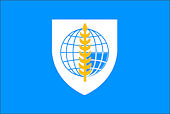
SEATO-Übung TEAMWORK II in Rayong (ระยอง).
Abb.: Lage von Rayong (ระยอง)
[Bildquelle: OpenStreetMap. -- Creative Commons Lizenz (Namensnennung, share alike)]
1960-01-29
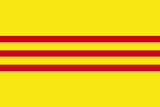
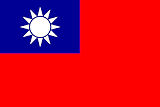
Gemeinsame Erklärung von Chiang Kai-shek (蔣介石, 1887 - 1975), Präsident der Republik China, und Jean-Baptiste Ngô Đình Diệm (1901 - 1963), Präsident von Südvietnam:
"It is the earnest hope of the two Chiefs of State that the temporary lull existing in the European scene will not lure the Free World off its guard, particularly in the Far East and Southeast Asia, where threat of aggression persists as long as the Chinese mainland remains under the yoke of International Communism. The aid received by the free Asian countries on the periphery of or in the path of aggression from the Communist bloc should therefore not be reduced, but should be further strengthened so as to enable them to meet effectively both the overt and covert Communist action." [Zitiert in: Vietnam and America : a documented history / [edited] by Marvin E. Gettleman [and others]. -- rev. and enlarged 2. ed. -- New York : Grove Press, 1995. -- 560 S. ; 25 cm. -- ISBN 0-8021-3362-2. -- S. 148. -- Fair use]
1960-02

US-Militärhilfe hat die Flughäfen in
- Korat (โคราช)
- Takhli (ตาคลี)
- Udon (อุดร)
- Ubon (อุบล)
- Chiang Mai (เชียงใหม่)
voll modernisiert. Die Arbeiten hatten 1955-04 begonnen
Abb.: Lage der genannten Flughäfen (außer Chiang Mai)
[Bildquelle: CIA. -- Public domain]
1960-02-06

Nach Wahlen wird U Nu (ဦးနု, 1907 - 1995) Ministerpräsident von Burma.
Abb.: U Nu (ဦးန)
[Bildquelle: my.Wikipedia]
1960-02-13

Frankreich zündet in der Sahara seine erste Atombombe.
1960-02-17
Es wird bekannt, dass das städtische Schlachthaus in Bangkok schwarz Hundefleisch verkauft hat. Der Bürgermeister verspricht Abhilfe.
1960-03-04
Der Leichnam einer vor 10 Jahren verstorbenen jungen Frau wird im Wat Bangsakae Nok in Thonburi (ธนบุรี) wegen seines guten Erhaltungszustands zur Schau gestellt. Der Leichnam ist stehend hinter einen Opferstock für den Tempel gestellt. Viele Besucher kommen, um für Glück oder Lottogewinn zu beten.
Abb.: Lage von Thonburi (ธนบุรี)
[Bildquelle: OpenStreetMap. -- Creative Commons Lizenz (Namensnennung, share alike)]
1960-03-16
Organization of Ministry of Defence Act of 1960 begründet die Supreme Command Headquarters (กองบัญชาการทหารสูงสุด; seit 2008: Royal Thai Armed Forces Headquarters - กองบัญชาการกองทัพไทย) der Streitkräfte.
Abb.: Flagge der Supreme Command Headquarters (กองบัญชาการทหารสูงสุด)
[Bildquelle: Wikipedia. -- Public domain]
1960-03-18
Eröffnung der Tourist Organisation of Thailand (องค์การส่งเสริมการท่องเที่ยวแห่งประเทศไทย) (TOT- อ.ส.ท.) (heute: Tourism Authority of Thailand - TAT - การท่องเที่ยวแห่งประเทศไทย <สำนักงานใหญ่>)
1960-03-21

In Nakhorn Ratchasima (นครราชสีมา), Ubon Ratchathani (อุบลราชธานี) und Udon Thani (อุดรธานี) werden von General Thanom Kittikachorn (ถนอม กิตติขจร) und US-Botschafter Ural Alexis Johnson (1908 - 1997) drei Militärflugplätze eingeweiht. Sie sollen im Falle einer Bedrohung, den USA und ihren Verbündeten ermöglichen, Thailand schnell zur Hilfe zu kommen.
Abb.: Flugplätze in Thailand, 1970
[Bildquelle: CIA. -- Public domain]
1960-03-24
Ministerpräsident Sarit beschimpft eine internationale Menschenrechtsgruppe, die ihn wegen Menschenrechtsverletzungen beschuldigt. Sie mischten sich in Angelegenheiten ein, die sie nichts angehen.
1960-04

Gründung des Goethe-Instituts in Bangkok. Es ist das erste Goethe-Institut in Südostasien.
1960-04

USA: Shaw University: Gründung des Student Nonviolent Coordinating Committee (SNCC). Es wird in den späteren 1960er Jahren wichtig im Kampf gegen den Vietnamkrieg.
Abb.: ®Logo
1960-04

Die USA erlauben den klinischen Test der Kinderlähmungsschluckimpfung an 180.000 Schulkindern. Der erfolgreiche Test führt zur Zulassung dieser Impfung, wodurch die Kinderlähmung besiegt werden könnten (wenn es nicht idiotische Impfverweigerer gäbe). Die Schluckimpfung wurde von Albert Bruce Sabin (1906 – 1993) entwickelt.
Abb.: Plakat für Schluckimpfung
[Bildquelle: CDC / Wikipedia. -- Public domain]
1960-04-01

USA: Start von TIROS 1, dem ersten zivilen Wettersatelliten. Wettersatelliten werden in der Folgezeit die Möglichkeiten der Wetterprognose revolutionieren und für die Landwirtschaft große Bedeutung erhalten.
Abb.: TIROS 1
[Bildquelle: NOAA / Wikipedia. -- Public domain]
1960-04-14 - 1960-09-01

Sultan Hisamuddin Alam Shah ibni Almarhum Sultan Alaiddin Sulaiman Shah (1898 - 1960) ist König (Yang di-Pertuan Agong) der Federation of Malaya (Persekutuan Tanah Melayu, ڤرسكوتوان تنه ملايو) bzw. ab 1963-09 von Malaysia
1960-04-16
Erstmals wird ein Thai Boxweltmeister: Pone Kingpetch (โผน กิ่งเพชร, 1935 - 1982) ersiegt sich den Weltmeistertitel im Fliegengewicht.
Abb.: Inserat
Abb.: Statue von Pone Kingpetch (โผน กิ่งเพชร), Hua Hin (หัวหิน)
[Bildquelle: Kriangsak Hongchumpae / Wikipedia. -- GNU FDLicense]
"Pone Kingpetch (Thai โผน กิ่งเพชร oder Mana Seedokbuab Thai มานะ สีดอกบวบ; * 12. Februar 1935 in Hua Hin (หัวหิน); † 31. März 1982 in Bangkok) war ein thailändischer Boxer.Profikarriere Kingpetch wurde 1954 Profi im Fliegengewicht. Er war vergleichsweise schwankend in seinen Leistungen, verlor mehrfach in der Anfangsphase, hatte Gewichtsprobleme und wich teilweise ins Bantamgewicht aus.
Am 16. April 1960 gewann er durch einen Punktsieg gegen Pascual Pérez die Weltmeisterschaft im Fliegengewicht. Im direkten Rückkampf gelang ihm sogar ein vorzeitiger Sieg gegen die argentinische Legende. Er wurde dadurch der erste thailändische Weltmeister und wird hinter Khaosay Galaxy (เขาทราย แกแล็คซี่, 1959 - ) heute allgemein als bester thailändischer Boxer aller Zeiten betrachtet.
Er verlor den Titel im Oktober 1962 in Tokio an den Japaner Fighting Harada (原田 政彦) durch eine KO-Niederlage in der elften Runde, konnte diesen aber im Rückkampf in seiner Heimat nach Punkten schlagen. Auch gegen dessen Landsmann Hiroyuki Ebihara (海老原博幸) ging er in Japan KO und gewann wiederum den Rückkampf in Thailand nach Punkten.
Die Punktniederlage gegen den Italiener Salvatore Burruni 1965 in Rom war sein letzter Titelkampf. 1966 beendete er seine Karriere.
Pone Kingpetch starb am 31. März 1982 in Bangkok im Alter von nur 47 Jahren."
[Quelle: http://de.wikipedia.org/wiki/Pone_Kingpetch. -- Zugriff am 2011-11-16]
1960-04-24

Möng Yawn (Burma): Gründung der Shan State Independence Army (SSIA)
Abb.: Lage von Möng Yawn
[Bildquelle: OpenStreetMap. -- Creative Commons Lizenz (Namensnennung, share alike)]
1960-05-02

Der König nimmt den Brauch der Königlichen Pflügezeremonie (การพืชมงคล) am Sanam Luang (สนามหลวง) wieder auf. Dieser Brauch war 1936 abgeschafft worden. Etwas später wird der Nationalfeiertag auf den Geburtstag des Königs, den 5. Dezember festgelegt. Bisher war der Nationalfeiertag am 24. Juni, dem Tag des Putsches zur Abschaffung der absolutistischen Monarchie 1932.
Abb.: Lage des Sanam Luang (สนามหลวง)
[Bildquelle: OpenStreetMap. -- Creative Commons Lizenz (Namensnennung, share alike)]
1960-05-03
Ministerpräsident Sarit ruft dazu auf, dass möglichst viele Thais nach Südthailand ziehen. Dort könnten sie im Zinnbergbau und auf den Kautschukplantagen gutes Geld verdienen.
1960-05-16

Der US-Physiker Theodore Harold Maiman (1927 - 2007) stellt den ersten Laser her.
Abb.: Reklame der Bangkok Skin & Laser Clinic, 2016
[Fair use]
1960-05-23/24

Die 1959-07-28 verhaftete Führungsriege der kommunistischen Lao Patriotic Front (ແນວລາວຮັກຊາດ) bricht aus dem Gefängnis aus und flieht mit den Fluchthelfern aus Vientiane (ວຽງຈັນ).
1960-05-28

Beginn der politischen "Säuberung" des buddhistischen Ordens durch Verhaftung zahlreicher Mönche:
"Bedeutsamer allerdings für die Ausschaltung dissidenter politischer Gruppen war die Politik der Regierung Sarit gegenüber dem buddhistischen Orden. Sollte der Buddhismus wirklich im Sinne eines integralen Nationalismus wirksam sein, so musste der buddhistische Orden als geschlossene und- einheitliche Formation erscheinen und den Zielsetzungen der diktatorischen Regierung dienstbar gemacht werden. Die Spannungen zwischen den beiden Nikayas und die dissidenten politischen Vorstellungen eines - wenn auch kleinen - Teils des buddhistischen Ordens führten daher in jener Zeit zu einer "Säuberungsaktion" unter den Mitgliedern der mönchischen Gemeinschaft, bei der sich das Regime des Feldmarschalls Sarit auch nicht davor scheute, direkt in die inneren Angelegenheiten die buddhistischen Ordens einzugreifen. Die Verhaftungswelle begann im Jahre 1960, als der damalige Vorsitzende des Geistlichen Ministerrates, Somdet Phra Ariyawong (Plot) [สมเด็จพระอริยวงศาคตญาณ สมเด็จพระสังฆราช (ปลด กิตฺติโสภณ), 1889 - 1962] , Patriarch [สังฆราช] des buddhistischen Ordens wurde. Anlässlich seines 71. Geburtstags war angeblich eine Demonstration gegen diesen Thera des Mahanikaya [มหานิกาย] geplant gewesen, die allerdings bereits die inneren Widersprüche im Mahanikaya selbst widerspiegelt. Es waren Flugblätter verteilt worden, welche nach Darstellung des Feldmarschalls Sarit Material enthielten,
"which aims at destroying peace and Order. They bear words and phrases which the Communists use, such as 'united we stand, divided we die."
Die Regierung - so Sarit - habe erst nach einigem Zögern und nach verstärkten politischen Aktionen von Mönchen eingegriffen. An der Agitation waren erstaunlicherweise vor allem Mönche des Mahanikaya beteiligt, die der Ernennung von Somdet Phra Ariyawong zum Patriarchen Widerstand leisten wollten. Zur Begründung dafür, warum ihre Haltung zu diesem Thera des Mahanikaya nun so negativ war, ist der Vorwurf geltend gemacht worden, dass Somdet Phra Ariyawong mit dem Thammayutika-Nikaya [ธรรมยุติกนิกาย] zusammen eine Übereinkunft getroffen habe, derzufolge der Mahanikaya von dissidenten und unruhigen Elementen gereinigt werden sollte. Der Widerstand richtete sich außerdem gegen die Tatsache, dass der neue Patriarch einen geistlichen Ministerrat ernannt hatte, dessen Vorsitzender eben jener frühere Phra Satsana Sophon [พระสาสนโสภณ], nun Somdet Phra Maha Wirawong (Chuan) [สมเด็จพระมหาวีรวงค์ (จวน), 1897 - 1971], wurde, gegen dessen Ernennung in das gleiche Amt viele Theras des Mahanikaya schon 1951 mit Erfolg Stellung bezogen hatten .
Die befürchtete Säuberung unter den Mönchen des Mahanikaya musste sich vor allem gegen sie progressive sozialkritisch eingestellte Richtung von Mönchen unter dem Abt von Wat Mahathat [วัดมหาธาตุ ยุวราชรังสฤษฎิ์ ราชวรมหาวิหาร] und Rektor der dortigen buddhistischen Hochschule, Phra Phimontham [พระพิมลธรรม, 1903 - 1989], richten. Dessen Reform-Programm und dessen zum Teil mit wertgeschätzten Traditionen brechendes Verhalten hatte nämlich Kritik auch unter den konservativeren Mönchen des Mahanikay selbst hervorgerufen. Der offene Widerstand von Mönchen gegen die Ernennung des Patriarchen führte daher zum sofortigen Einsatz von Polizei, die vor allem unter den Anhängern von Phra Phimontham nach Dokumenten und Indizien für eine strafbare Handlung suchte.
Schon kurz nach der Verbreitung der Flugblätter ließ Feldmarschall Sarit die Öffentlichkeit wissen, dass auch ranghohe Mönche des buddhistischen Ordens in den Fall verwickelt seien, den er mittlerweile als Akt kommunistischer Subversion bezeichnete. Während der Suche nach Hinweisen über die Herkunft der beanstandeten Flugblätter nahm die Polizei bereits Anfang Juni 1960 in Wat Mahathat zwei Mönche vorübergehend fest, in deren Besitz nach Aussagen der Polizei rund 200 kommunistische Bücher waren. Diese beiden Mönche, Phra Maha Manat Chitthamo (Puanglamchiak [พระมหามนัส พวงลำเจียก]) und Phra Maha Nakhon Khempali [พระมหานคร] (Phadungyat [พยงุญาติ, 1922-
2008] ) mussten einer scharf anti-kommunistischen Militärdiktatur gefährlich erscheinen. Besonders Phra Maha Manat war als zeitweiliger Sekretär der buddhistischen Hochschule "Maha-Chulalongkorn Racha- Withayalai" [มหาจุฬาลงกรณราชวิทยาลัย] maßgeblich an jener mönchischen Bewegung beteiligt, die im Jahre 1957 eine buddhistische Wohlfahrtsgesellschaft propagiert hatte und dabei die stillschweigende Unterstützung durch den Rektor der Hochschule, Phra Phimontham, gefunden hatte. Beide Mönche,die an der buddhistischen Universität in Nalanda [नालन्दा] studiert hatten, waren außerdem der Regierung Sarit verdächtig geworden, weil sie - allerdings bereits vor der Machtübernahme von Sarit - [1957] an einem Kongress der Buddhistischen Vereinigung Chinas in Peking teilgenommen hatten. Wegen der Teilnahme an diesem Kongress wurde auch ein dritter buddhistischer Mönch und Nalanda-Schüler, nämlich Phra Maha Sangwian Tettharo (Miphaophong) [พระมหาสังเวียนเตชธโร (มีเผ่าพงษ์)] festgenommen .Höhepunkt der Säuberungsaktionen war schließlich die Amtsenthebung des Mentors der linksorientierten Mönchsbewegung, des schon mehrfach genannten Phra Phimontham, Abt von Wat Mahathat und Rektor der dortigen buddhistischen Hochschule, der als Geistlicher Minister für die Innere Verwaltung des buddhistischen Ordens einer der höchsten Würdenträger war. Mit der offiziellen Begründung, er sei gegenüber dem Patriarchen ungehorsam gewesen, ging er im November 1960 seines kirchlichen Ranges und seiner Ämter verlustig . Gleichzeitig lautete noch ein anderer fragwürdiger Vorwurf, der Mönch habe homosexuelle Beziehungen unterhalten. Diese Anschuldigungen gegen Phra Phimontham lösten damals unter den Mönchen eine derartige Unruhe aus, dass sich die Ordensverwaltung noch im gleichen Jahr 1960 dazu veranlasst sah, den sich wild ausbreitenden Gerüchten entgegenzutreten. Ausdrücklich wurde betont, dass der Patriarch und der Geistliche Ministerrat nicht daran dächten, Wat Mahathat, die angeschlossene buddhistische Hochschule oder das Meditationszentrum in irgendeiner Weise aufzulösen oder zu zerstören . Aufgrund der unerwartet starken Sympathie-Welle und der Petitionen seiner Anhänger an die Regierung wurden schließlich die ohnehin fragwürdigen Anschuldigungen gegen Phra Phimontham nicht weiter verfolgt, und er blieb praktisch bis zum Jahre 1962 in seinem Amt."
[Quelle: Skrobanek, Walter <1941 - 2006>: Buddhistische Politik in Thailand : mit besonderer Berücksichtigung des heterodoxen Messianismus. -- Wiesbaden : Steiner, 1976. -- 315 S. ; 24 cm. -- (Beiträge zur Südasienforschung ; 23). -- ISBN 3-515-02390-9. -- Zugl.: Heidelberg, Univ., Diss., 1972. -- S. 232ff. -- Mit Erlaubnis des inzwischen verstorbenen Autors]
1960-06-03 - 1960-08-15

Prinz Somsanith Vongkotrattana (ເຈົ້າສົມສະໜິດ, 1913 – 1975) ist Ministerpräsident von Laos
1960-06-05
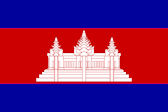
In einer Volksabstimmung wird Prinz Norodom Sihanuk (នរោត្ដម សីហនុ) zum Staatsoberhaupt Kambodschas gewählt. Im Interesse der Politik verzichtet er auf den Königstitel.
1960-06-14 - 1961-01-18
König Bhumibol und Königin Sirikit samt Kindern sind auf einer Besuchstour durch 17 Länder. Während dieser Zeit ist die Königinmutter Srinagarindra (ศรีนครินทรา, 1900 - 1995) Regentin. Die Königin trägt Kleider, die der berühmte französische Modedesigner Pierre Alexandre Claudius Balmain (1914 - 1982) extra für sie entwirft. Ihr Schmuck ist kostbarst. In Thailand wird dies nicht von allen goutiert.
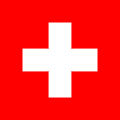
Das Hauptquartier für die Europareise ist die Villa Flonzaley in Pouidoux (Schweiz). Die Villa gehört dem Rechtanwalt Jean-René Mermoud.
Abb.: Lage von Pouidoux
[Bildquelle: OpenStreetMap. -- Creative Commons Lizenz (Namensnennung, share alike)]Die Besuchstour ist Anlass für die Königin, moderne Nationalkleidung für festliche Anlässe entwerfen zu lassen. In der Folgezeit werden acht offizielle Designs entworfen:
- Ruean Ton (ชุดไทยเรือนต้น)
- Chit Lada (ชุดไทยจิตรลดา)
- Amarin (ชุดไทยอมรินทร์)
- Borom Phiman (ชุดไทยบรมพิมาน)
- Chakkri (ชุดไทยจักรี)
- Dusit (ชุดไทยดุสิต)
- Chakkraphat (ชุดไทยจักรพรรดิ์)
- Siwalai (ชุดไทยศิวาลัย)
"When Queen Sirikit accompanied the king in state visits to Europe and the United States in 1960, she noted that there was a need for a modern national costume suitable for formal wear. The queen had research conducted into historical records of royal dresses, and eight official designs were developed and promoted by the queen and her aides. They are named the Ruean Ton (ชุดไทยเรือนต้น), Chit Lada (ชุดไทยจิตรลดา), Amarin (ชุดไทยอมรินทร์), Borom Phiman (ชุดไทยบรมพิมาน), Chakkri (ชุดไทยจักรี), Dusit (ชุดไทยดุสิต), Chakkraphat (ชุดไทยจักรพรรดิ์) and Siwalai (ชุดไทยศิวาลัย) Thai dresses. Since then, these dresses have come into regular use by the public as well.[4] Thai Chakkri (ชุดไทยจักรี)
Thai Chakkri is a formal and elegant wear, normally produced using "Yok" weaving technique (Yok creates additional thickness within the fabric without adding supplementary threads. Often a touch of gold or silver-colored threads are added, making the fabric produced this way particularly more expensive) The costume is finished with "pha sin", a full length wrap-around skirt with two pleated folds in the front called "na nang".
Thai Boromphiman (ชุดไทยบรมพิมาน)Thai Boromphiman, also a formal evening attire, comprises a long sleeved blouse which is either buttoned at the front or the back. The blouse is tucked beneath pha sin with its front pleats (na nang). The fabric is brocaded to create a highly luxurious look and feel. The collar of the blouse is round-necked. The skirt length runs about the ankle. The skirt and blouse are sewn together like a one piece dress of which style is suitable for a tall and slender wearer. It can be worn in either formal or semi-formal events such as the League Ceremony or royal functions. Royal decorations are also worn.
Thai Siwalai (ชุดไทยศิวาลัย)Thai Siwalai, a formal evening costume, is quite similar to Thai Boromphiman, but has an over-shoulder shawl. It is worn for royal ceremonies or formal functions.
Thai Chakkraphat (ชุดไทยจักรพรรดิ์)Thai Chakkraphat is a Thai dress with a shawl like Thai Chakkri. However, it is more conservative and considered more official. The upper part has a pleated shawl cover , a thicker shawl with full embroidery on the upper shawl. It can be worn for royal or national ceremonies.
Thai Amarin (ชุดไทยอมรินทร์)Thai Amarin is evening attire, made of brocaded fabric. With this style, the person does not have to wear a belt. The blouse can be wide and round-necked. The sleeve length sits just below the elbow. The beauty of this dress is its textile and accessories. It can be use for an evening dinner or at the Royal Birthday Procession. The royal decorations are worn.
Thai Chitlada (ชุดไทยจิตรลดา)Thai Chitlada, with its brocaded band at the hem of the pha sin, is a daytime ceremonial dress. It can be worn with a long sleeved silk blouse, with the front opening attached with five ornamental silver or gold buttons. The pha sin is a casual wraparound. It can be worn to a ceremony that is a not too informal such as welcoming the official royal guests at the airport. Wearers do not need to wear royal decorations but the color and style should be appropriate.
Thai Ruean Ton (ชุดไทยเรือนต้น)Thai Ruean Ton is the most casual clothing of all outfits. It comprises a horizontally or vertically striped silk or plain-coloured pha sin with a patterned band at the hem, sometimes folded to one side, The collarless blouse that goes with it is separated from the ankle-length skirt. The sleeves are elbow length, and the blouse has a front opening. It is suitable for casual and non-official functions such as Kathin Ton, the religious ceremony of the conferring of royal offerings to monks."
[Quelle: http://en.wikipedia.org/wiki/Thai-style_dresses. -- Zugriff am 2012-06-14]
1960-06-18 - 1960-07-15


Staatsbesuch des Königspaars in den USA. Präsident: Dwight David "Ike" Eisenhower (1890 - 1969)
Das Königspaar kommt mit
- 80 Stück Handgepäck
- 3 sehr große Schrankkoffer
- 6 normale Schrankkoffer
Davon sind für den König 3 Schrankkoffer und 2 kleine Koffer.
Das Königspaar besucht:
New York
Washington DC
Boston
Tennessee
Colorado
Los Angeles
Honolulu
Abb.: Besuchstour in den USA
[Bildquelle: CIA. -- Public domain]1960-06-15 Der König spielt in Honolulu Klarinette zusammen mit Ken Alford und seinen Dixie Cats
1960-06 In Hollywood trifft das Königspaar den Rockstar Elvis Presley (1935 - 1977) bei den Dreharbeiten zum Film G.I. Blues (Premiere 1960-08-18), der aber nicht mit dem König musiziert.
Abb.: Filmplakat, 1960
[Bildquelle: Wikimedia. -- Fair use]1960-06-20 das Königspaar besucht die Paramount Film Studios in Los Angeles
1960-06-22 die Königsfamilie besucht Disneyland in Anaheim (Kalifornien). Dort trifft sie Walt Disney (1901 - 1966). Der Kronprinz erhält von Walt Disney eine Mickey Mouse Zeichnung.
1960-06-28 Staatsbankett von Präsident Dwight David "Ike" Eisenhower zu Ehren des Königspaars.
Abb.: Das Königspaar mit US-Präsident Dwight David "Ike" Eisenhower (1890 - 1969) und Gattin Mamie Geneva Doud Eisenhower (1896 - 1979), 1960-06-28
[Bildquelle: Wikipedia. -- Public domain]Am 1960-06-28 erhält der König von Präsident Eisenhower die Legion of Merit.
Abb.: Chief Commander of the Legion of Merit
[Bildquelle: Wikimedia. -- Public domain]Am 1960-06-29 spricht der König vor dem US-Kongress
Abb.: König Bhumibol spricht vor dem vereinigten US-Kongress, 1960-06-29
[Bildquelle: Wikipedia. -- Public domain]1960-06-29 Der König besucht die Library of Congress
1960-06-04 der König spielt Saxophon zusammen mit dem der Jazz-Klarinettisten Benny Goodman (1909 - 1968) bei einer Abendparty auf dem Rockefeller-Anwesen
1960-07-05 der König spielt Saxophon zusammen mit dem der Jazz-Klarinettisten Benny Goodman (1909 - 1968) in Goodman's Appartement in New York
1960-07-05 in New York erhält das Königspaar eine Konfettiparade (ticker tape parade) mit 750.000 Teilnehmern.
Abb.: Konfettiparade (ticker tape parade) für das Königspaar, New York, 1960-07-05
[Bildquelle: The Eagle and the elephant : Thai-American relations since 1833 = ความสัมพันธ์ไทย-อเมริกัน ตั้งแต่ พ.ศ. 2376. -- Golden Jubilee ed. = ฉบับกาญจนาภิเซกสมโภช / ed. Patricia Norland [u.a.]. -- Bangkok : United States Information Service, 1997. -- 279 S. : Ill. ; 29 cm. -- ISBN 974-89415-1-5. -- S. 120. -- Fair use]In New York (USA) müssen für das Königspaar auftreten und mit dem König (Saxophonist) musizieren:
der Jazz-Klarinettist Benny Goodman (1909 - 1968). -- Künstlerlink auf Spotify: https://open.spotify.com/artist/1pBuKaLHJlIlqYxQQaflve
der Jazz-Schlagzeuger und -Vibraphonist und Band-Leader Lionel Hampton (1908 - 2002). -- Künstlerlink auf Spotify: https://open.spotify.com/artist/2PjgZkwAEk7UTin4jP6HLP
der Jazz-Schlagzeuger Gene Krupa (1909 - 1973). -- Künstlerlink auf Spotify: https://open.spotify.com/artist/2YODXXiVE8ABc0TfihLOFj
der Jazz-Vibraphonist Red Norvo (1908 – 1999). -- Künstlerlink auf Spotify: https://open.spotify.com/artist/6TDBjaKrCj3BvbxhiUSbog
der Jazz-Trompeter und -Sänger Louis Armstrong (1901 - 1971). -- Künstlerlink auf Spotify: https://open.spotify.com/artist/19eLuQmk9aCobbVDHc6eek
der Jazz-Trompeter Jonah Jones (1909 – 2000). -- Künstlerlink auf Spotify: https://open.spotify.com/artist/5u7FXbK7whWNTbgeicnbG9
der Jazz-Posaunist Jack Teagarden (1905 - 1964). -- Künstlerlink auf Spotify: https://open.spotify.com/artist/3okiREk3dV4F8BmK7cpEJf
der Jazz-Posaunist Urban Clifford "Urbie" Green (1926 - ). -- Künstlerlink auf Spotify: https://open.spotify.com/artist/1QTyeOWOgAXxQQf32kPLAL
der Jazz-Pianist Theodore Shaw "Teddy" Wilson (1912 – 1986). -- Künstlerlink auf Spotify: https://open.spotify.com/artist/0tg5uVI4VjzZOFzBryJZii
Der König spielt ua. bei folgenden Stücken mit
The Sheik of Araby / von Theodore Frank Snyder (1881 – 1965)
Honeysuckle Rose / von Thomas Wright "Fats" Waller (1904 – 1943)
On the Sunny Side of the Street / von James "Jimmy" Francis McHugh (1894 – 1969)
Die Songs auf Spotify:
URI: spotify:track:4EeOFgDYjyel0vpbzK6f2M
URL: https://open.spotify.com/track/4EeOFgDYjyel0vpbzK6f2MURI: spotify:track:5wGwWGvsZGLUXzsTxKLFin
URL: https://open.spotify.com/track/5wGwWGvsZGLUXzsTxKLFinURI: spotify:track:3w4x6Xd6hSHzR2G1VeHVzP
URL: https://open.spotify.com/track/3w4x6Xd6hSHzR2G1VeHVzP
Abb.: Titelblatt der Sheet Music, 1021
[Bildquelle: Wikipedia. -- Public domain]Der König erhält von Benny Goodman ein Selmer-Saxophon
Abb.: Königin Sirikit in New York, 1960-07-07
[Bildquelle: Phil Stanziola, World Telegram staff photographer / Wikimedia. -- Public domain]1960-07-07 Das Königspaar besucht in Boston die Harvard Medical School, wo der Vater des Königs studiert hatte, und in Cambridge MA das Mt. Auburn Hospital, wo der König geboren wurde.
1960-06-20

Zwei Mönche von Wat Sampraya (Bangkok) werden aus dem Orden ausgeschlossen, weil sie an einer buddhistischen Versammlung in Beijing (北京) teilgenommen hatten. Daraufhin wird allen Mönchen verboten, zu ausländischen Konferenzen zu fahren.
1960-06-23


Die Kommunistische Partei Chinas (中国共产党 ) verwirft die Strategie der "friedlichen Koexistenz" und bricht mit der Sowjetunion.

1960-06-23

U.S. Food and Drug Administration lässt Mestranol/noretynodrel (Markenname: ®Enovid) als emnpfängnisverhütendes Mittel (Die Pille) zu. 1957-07-10 war es als Mittel gegen Menstruationsbeschwerden zugelassen worden.
1960-07

Reader' Digest: The King who was born in America / von Noel F. Busch:
Der Königspalast in Bangkok beherbergt
- einen 18-Loch-Golfplatz
- ein voll eingerichtetes Theater
- eine Schule
Die Kinder des Königs haben vier Kindermädchen.
Der König mag
- Badminton
- Tauchen
- Wasserski
Der König habe in den Gesetzen, die ihm Ministerpräsident Feldmarschall Plaek Phibunsongkhram (แปลก พิบูลสงคราม, 1897 - 1964) zur Unterschrift vorgelegt hat, Fehler gefunden und die Gesetze darum zurückgeleitet zur Verbesserung.
Währen der Kindheit in Lausanne habe das einzige buddhistische Ritual in einem Abendgebet auf Thai bestanden: "Möge mir der Herr Buddha helfen, ein gutes Kind zu sein."
1960-07-19 - 1960-11-04

Staatsbesuche des Königspaars in europäischen Ländern
Abb.: In Europa besuchte Länder (Deutschland ohne DDR)
[Bildquelle: CIA. -- Public domain]
1960-07-19 - 1960-07-22


Staatsbesuch im United Kingdom. Königin: Elizabeth II, Dei Gratia Magnae Britanniae, Hiberniae et terrarum transmarinarum quae in ditione sunt Britannica Regina, Fidei Defensor (1926 - )
Abb.: Elizabeth II, Dei Gratia Magnae Britanniae, Hiberniae et terrarum transmarinarum quae in ditione sunt Britannica Regina, Fidei Defensor, 1960
[Bildquelle: Wikimedia. -- Public domain]Das Königspaar schenkt der britischen Königin einen fast 200 kg schere Elefanten aus Teakholz mit echten Elfenbeinzähnen.
In ihrem Toast beim Staatsbankett Erwähnt Königin Elizabeth u.a., dass 1000 Thais in Großbritannien studieren.
Laut The Observer vom 1960-07-17 hat der König folgende Hobbys:
- Jazz
- Schnelle Sportwagen
- Kriminalromane
- Alfred-Hitchcock -Thriller
- Fotografie
- Sport
- Badminton
- Gewichtheben
Laut derselben Quelle hat die Königsfamilie
- 40 Pagen
- 100 Dienstmädchen
1960-07-26 - 1960-08-02


Staatsbesuch in der Bundesrepublik Deutschland. Bundespräsident: Heinrich Lübke (1894 - 1972)
Abb.: König Bhumibol und Bundespräsident Lübke, 1960-07-28
[Bildquelle: Bundesarchiv, B 145 Bild-F009754-0006 / Steiner, Egon / CC-BY-SA]
Abb.: Königin Sirikit mit Bundespräsident Lübke und Gattin, 1960-07-28
[Bildquelle: Bundesarchiv, B 145 Bild-F009754-0005 / CC-BY-SA]
Abb.: Königin Sirikit beim Staatsbesuch in Deutschland, 1960
[Bildquelle: Bundesarchiv, B 145 Bild-F009754-0002 / Steiner, Egon / CC-BY-SA]
1960-08-15


Die deutsche Botschaft an das Auswärtige Amt:
„Die thailändische Presse hat über den Staatsbesuch des Königspaares in großer Aufmachung berichtet. Vor allem die thaisprachigen Tageszeitungen brachten zahlreiche Bilder, die größtenteils von der deutschen Botschaft zur Verfügung gestellt wurden, auf ihren ersten Seiten. Der Tenor der begleitenden Texte und Artikel war überaus freundlich und positiv gehalten." [Zitiert von: Andreas Stoffers. -- In: Sawasdee : 150 Jahre Deutsch-Thailändische Freundschaft, 50 Jahre Deutsch-Thailändische Gesellschaft / Andreas Stoffers (Hrsg.). -- Rosenheim : Rosenheimer, 2012. -- 240 S. : Ill. ; 28 cm. -- ISBN 978-3-475-54134-6. -- S. 70]
1960-08-22 - 1960-08-24


Staatsbesuch in Portugal. Staatspräsident: Américo de Deus Rodrigues Tomás (1894 - 1987)
Abb.: Américo de Deus Rodrigues Tomás, 1964
[Bildquelle: Biblioteca Municipal de Figueiró dos Vinhos. -- http://www.flickr.com/photos/bmfigueirodosvinhos/3765593643/. -- Zugriff am 2014-10-30. -- Creative Commons Lizenz (Namensnennung)]
1960-08-29 - 1960-08-31


Staatsbesuch in der Schweiz. Bundespräsident: Max Petitpierre (1899 - 1994)
Abb.: Einbandtitel
[Fair use]
1960-09-06 - 1960-09-08


Staatsbesuch in Dänemark. König: Frederik 9. (Christian Frederik Franz Michael Carl Valdemar Georg) (1899 - 1972)
In Dänemark initiiert der König zusammen mit König Frederik 9. das königliche Schulmilch-Projekt. Es wird von Dänemark finanziert.
Abb.: Frederik 9. (Christian Frederik Franz Michael Carl Valdemar Georg) (Mitte) mit Gattin Ingrid Victoria Sofia Louise Margareta (1910 - 200) (links), 1958
[Bildquelle: Maersk Line. -- http://www.flickr.com/photos/maerskline/7312780066/ . -- Zugriff am 2014-10-30. -- Creative Commons Lizenz (Namensnennung, share alike)
1960-09-19 - 1960-09-20

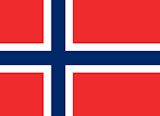
Staatsbesuch in Norwegen. König: Olav V (Alexander Edward Christian Frederik, prins av Danmark) (1903 - 1991)
Abb.: Olav V (Alexander Edward Christian Frederik, prins av Danmark) (links), 1969
[Bildquelle:
1960-09-21 - 1960-09-24

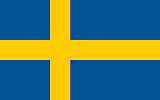
Staatsbesuch in Schweden. König: Gustaf VI Adolf (Oscar Fredrik Wilhelm Olaf Gustaf Adolf) (1882 - 1973)
Abb.: Gustaf VI Adolf (Oscar Fredrik Wilhelm Olaf Gustaf Adolf) , 1962
[Bildquelle: Wikimedia. -- Public domain]
1960-09-28 - 1960-10-01

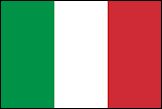
Staatsbesuch in Italien. Staatspräsident: Giovanni Gronchi (1887 - 1978)
Abb.: Giovanni Gronchi
[Bildquelle: Wikimedia. -- Public domain]
1960-09-28 - 1960-09-30

Phnom Penh: Geheimtreffen der 21 Delgierten der Khmer People's Revolutionary Party (KPRP / គណបក្សប្រជាជនបដិវត្តន៍កម្ពុជា). Sie gründen die geheime Workers Party of Kampuchea, Vorläuferin der Khmer Rouge.
1960-10-01

Staatsbesuch im Vatikan. Papst: Ioannes XXIII (geb. Angelo Giuseppe Roncalli) (1881 - 1963)
Abb.: Johannes XXIII., 1960
[Bildquelle: Nationaal Archief, Den Haag, Rijksfotoarchief: Fotocollectie Algemeen Nederlands Fotopersbureau (ANEFO) / Wikimedia. -- Creative Commons Lizenz (Namensnennung, share alike)]
1960-10-04 - 1960-10-06


Staatsbesuch in Belgien. König: Baudouin (Baudouin Albert Charles Léopold Axel Marie Gustave / Boudewijn Albert Karel Leopold Axel Marie Gustaaf / Balduin Albert Karl Leopold Axel Marie Gustav) (1930 - 1993)
Abb.: Baudouin (Baudouin Albert Charles Léopold Axel Marie Gustave / Boudewijn Albert Karel Leopold Axel Marie Gustaaf / Balduin Albert Karl Leopold Axel Marie Gustav) mit seiner Gattin Doña Fabiola Fernanda María-de-las-Victorias Antonia Adelaida Mora y Aragón (1928 - ), 1961
[Bildquelle: Pot, Harry / ANEFO / Wikimedia. -- Creative Commons Lizenz (Namensnennung, share alike)]
1960-10-11 - 1960-10-13


Staatsbesuch in Frankreich. Präsident: Charles André Joseph Marie de Gaulle (1890 - 1970)
Abb.: Charles André Joseph Marie de Gaulle, 1961
[Bildquelle: Bundesarchiv, B 145 Bild-F010324-0002 / Steiner, Egon / Wikimedia. -- Creative Commons Lizenz (Namensnennung, share alike)]Beim Staatsbesuch in Frankreich betont König Bhumobol, dass man, um Jazz schätzen zu können, zuerst klassische Musik lieben müsse. Einer seiner Lieblingskomponisten sei Frédéric Chopin (1810 –1849). In der Opéra Garnier in Paris schenkt der König besonders einem Portrait Richard Wagners (1813 - 1883) besondere Beachtung.
1960-10-17 - 1960-10-18

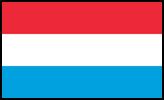
Staatsbesuch in Luxemburg. Großherzogin: Charlotte Adelgonde Elisabeth Marie Wilhelmine vu Lëtzebuerg (1896 - 1985)
Abb.: Charlotte Adelgonde Elisabeth Marie Wilhelmine vu Lëtzebuerg mit Gatte Felix Marie Vincent Prënz vu Bourbon-Parma (1983 - 1970), 1964
[Bildquelle: Nijs, Jac. de / Anefo. -- http://www.gahetna.nl/collectie/afbeeldingen/fotocollectie/zoeken/weergave/detail/q/id/ad799036-d0b4-102d-bcf8-003048976d84. -- Zugriff am 2014-10-30. -- Creative Commons Lizenz (Namensnennung, share alike)]
1960-10-24 - 1960-10-25

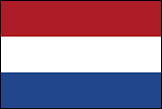
Staatsbesuch in den Niederlanden. Königin: Juliana Louise Emma Marie Wilhelmina van Oranje-Nassau (1909 - 2004)
Abb.: Ankunft des Königspaars in Den Haag, 1960-10-24
[Bildquelle: Nationaal Archief, Den Haag, Rijksfotoarchief / Wikimedia. -- Creative Commons Lizenz (Namensnennung, share alike)]
Abb.: Das Königspaar in Rotterdam, 1960-10-25
[Bildquelle: Nationaal Archief, Den Haag, Rijksfotoarchief / Wikimedia. -- Creative Commons Lizenz (Namensnennung, share alike)]
Abb.: Lage von Den Haag und Rotterdam
[Bildquelle: CIA. -- Public domain]
1960-11-02 - 1960-11-04

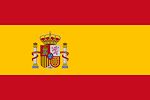
Staatsbesuch in Spanien. Caudillo: Francisco Franco Bahamonde (1892 - 1975)
Abb.: Francisco Franco Bahamonde, 1949
[Bildquelle: Indalecio Ojanguren. -- http://www.argazkiak.org/photo/franco-eibarren/. -- Zugriff am 2014-10-30. -- Creative Commons Lizenz (Namensnennung)]

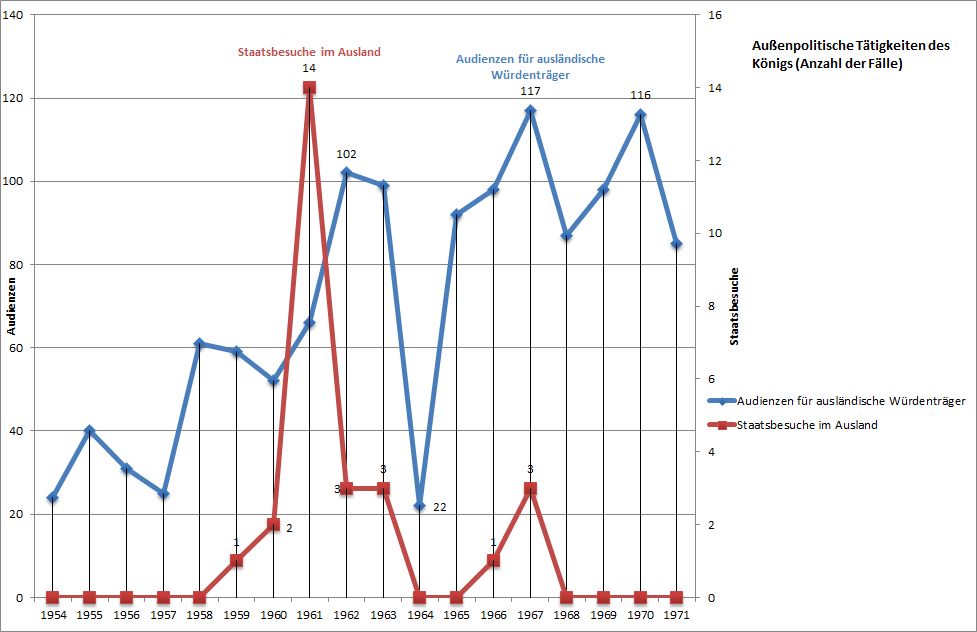
Abb.: Außenpolitische Tätigkeiten des Königs: Staatsbesuche im Ausland und
Empfang ausländischer Würdenträger, 1954 - 1971
[Datenquelle: Thak (1978), S. 219]
ca. 1960-11-16 - 1961-01-15



Die königliche Familie macht Winterurlaub in der Schweiz. Der König will, dass seine Kinder Skifahren, Eislaufen und Eishockey lernen. Neujahr wird im Palace Hotel in Gstaad gefeiert. Am Silvesterabend spielt Louis Armstrong persönlich für die königliche Familie
Abb.: Lage von Gstaad
[Bildquelle: OpenStreetMap. -- Creative Commons Lizenz (Namensnennung, share alike)]
Abb.: Gstaad, 2011
[Bildquelle: GstaadTourismus / Wikimedia. -- Creative Commons Lizenz (Namensnennung, share alike)]
Abb.: Palace Hotel Gstaad, 2011
[Bildquelle: CameliaTWU. -- http://www.flickr.com/photos/cameliatwu/6317081190. -- Zugriff am 2014-10-12. -- Creative Commons Lizenz (Namensnennung, keine kommerzielle Nutzung, keine Bearbeitung)]
Abb.: Louis Armstrong, 1953
[Bildquelle: LoC / Wikimedia. -- Public domain]
1960-07

Vertrag mit Burma über den erleichterten Grenzübertritt von Bewohnern beider Länder, die innerhalb von 10 Meilen von der Grenze wohnen.
1960-07-21
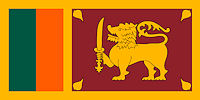
Ceylon: Als weltweit erste Frau wird Sirimavo Ratwatte Dias Bandaranaike (සිරිමාවෝ බණ්ඩාරනායක, 1916 - 2000) Ministerpräsidentin.
Abb.: Sirimavo Ratwatte Dias Bandaranaike (සිරිමාවෝ බණ්ඩාරනායක)
[Bildquelle: Anuradha Dullewe Wijeyeratne / Wikipedia. -- GNU FDLicense]
1960-08-03

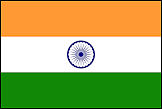
Der frühere Ministerpräsident Feldmarschall Phibun Songkhram (แปลก พิบูลสงคราม, 1897 -1964) lässt sich im Thai-Kloster in Bodhgaya (बोधगया) in Indien zum Mönch ordinieren. Phibun hofft, dass er als Mönch nach Thailand zurückkehren kann. Phibun war 1957 nach dem Putsch Sarit's ins Exil gegangen.
Abb.: Lage von Bodhgaya (बोधगया)
[Bildquelle: OpenStreetMap. -- Creative Commons Lizenz (Namensnennung, share alike)]
Abb. Thai-Kloster, Bodhgaya - बोधगया, Indien
[Bildquelle: Paul Carvill. -- http://www.flickr.com/photos/paulcarvill/2527681983/. -- Zugriff am 2011-11-07. -- Creative Commons Lizenz (Namensnennung, keine kommerzielle Nutzung)]
1960-08-09


Putsch in Laos: Der Army Capt Kong Le (ກອງແລ, 1933 - 2014) stürzt die von den USA unterstützte rechtsgerichtete Regierung. Daraufhin schickt die USA nicht gekennzeichnete Air Amerika-Flugzeuge nach Savannakhet (ສະຫວັນນະເຂດ), um eine Attacke auf Kong Le's Truppen zu unterstützen. Von den USA ausgebildete Thai-Truppen kämpfen entlang des Mekong gegen Truppen Kong Le's. Kong Le wurde schließlich zurückgedrängt.
Abb.: Lage von Savannakhet (ສະຫວັນນະເຂດ)
[Bildquelle: OpenStreetMap. -- Creative Commons Lizenz (Namensnennung, share alike)]
"Kong Le (ກອງແລ, 1933 - 2014) is a former paratrooper captain in the Royal Lao Army known for overthrowing the government of Laos in a 1960 coup d'état. He obtained his training from the Armed Forces of the Philippines in 1957 and joined the Royal Lao Army in 1960. Coup of 1960
On August 9, Kong Le led the Second Paratroop Battalion in a nearly bloodless coup. In taking over Vientiane (ວຽງຈັນ), the paratroopers had unwittingly chosen a moment when the entire cabinet was in Luang Phrabang (ຫຼວງພຣະບາງ) conferring with King Sri Savang Vatthana (Thai: ศรีสว่างวัฒนา). They informed their compatriots and the outside world by broadcasting their communiqués on the radio. In a rally at the city football stadium on August 11, Kong Le expanded on his goals: end the fighting in Laos, stem corruption, and establish a policy of peace and neutrality. Recalling the experience of the first coalition when the country was temporarily at peace, Kong Le asked for the nomination of Souvanna Phouma as prime minister.
On August 11, General Ouane Rattikone, as the cabinet's envoy, arrived in Vientiane from Louang Phrabang. After negotiations with Kong Le and Souvanna Phouma, Ouan returned to Louang Phrabang with a document in which the coup leaders requested the cabinet to return. Fearing violence in Vientiane, the premier, Prince Somsanith Vongkotrattana, resigned, and the King named Souvanna Phouma prime minister. The new government was invested by thirty-four deputies on August 16. The next day, Kong Le declared his coup over and vacated the Presidency of the Council of Ministers.
Neutralist government to coalitionGeneral Phoumi Nosavan (ຜກຸມກິ ນອວກະກະສນ) then went to Thailand and with the help of its dictator, his mentor Sarit Dhanarajata, returned to Laos to establish a competing capital in Savannakhet. Phoumi proceeded to attack Vientiane, weakened by a Thai blockade, on September 18 but the neutralists with the help of the Pathet Lao (ປະເທດລາວ) and the Soviet Union, repulsed the attack. A coalition government was formed between neutralists, communists and rightists on November 18, 1960. On December 8, Souvanna Phouma relieved Kong Le from his command, but the next day Kong Le deposed Souvanna Phouma (who flew to Phnom Penh with Prince Boun Om (Thai: เจ้าบุญอุ้ม ณ จำปาศักดิ์) and his other ministers) and the leftist minister Quinim Pholsena was appointed premier. A few days later Phoumi took Vientiane and installed Boun Oum (Boun Om's brother) as premier. After more than a year of negotiations a coalition government was formed under the leadership of Souvanna Phouma.
On November 27, 1962 Kong Le was appointed chief of the new army (nominally the merged armies of the neutralist, communist and rightist factions).
Renewed conflictThe neutralist group was soon divided between right-leaning neutralists (headed by Kong Le) and left-leaning neutralists (headed by Quinim Polsena and colonel Deuane Sunnalath). On February 12, 1963 Kong Le's second in command, Colonel Ketsana, was assassinated. Shortly afterwards Quinim Polsena and his deputy were also assassinated. Fearing for their lives, the left wing ministers fled to Khang Khay, capital of the Pathet Lao zone. The Pathet Lao and neutralist-leftists attacked the Plain of Jars (ທົ່ງໄຫຫິນ) but Kong Le now allied with Phoumi, repulsed the attack. The neutralist government was deposed by the right-wing generals Kouprasith Abhay and Siho Lamphouthakoun April 19, 1964, but following international pressure, Souvanna Phouma was reinstalled as premiere.
On January 31, 1965 Phoumi and Siho led a coup, but Kong Le's troops defeated them by February 4. Phoumi and Siho fled to Thailand.
The right wing parliament was dissolved by Souvanna Phouma on October 7, 1966. There was a strong reaction from the right wing faction of the army. The struggle lasted until November 15 when Kong Le was dismissed as army chief and left the country. The mainly neutralist sector of the army went to the Pathet Lao controlled zone.
Kong Le now lives in exile, primarily in the United States."
[Quelle: http://en.wikipedia.org/wiki/Kong_Le. -- Zugriff am 2011-11-07]Radiobotschaft von Kong Le (ກອງແລ, 1933 - 2014) am 1960-08-09:
"Communiqué No. 1. All compatriots! The High Command of the Revolution informs the people that as of 0300 hours August 9 it has held in its hands all civil and military powers. The population is urged to remain calm and to continue work as usual and to respect the laws of the country. Captain
Kong Le ກອງແລ, 1933 - 2014]Communiqué
No. 2. The High Command of the Revolution informs the people that the military coup de force is aimed at safeguarding and consolidating the Nation, the religion, the Throne, and the Constitution. The revolutionary group will apply justice and friendship to all those who remain quiet, continue their usual occupations, and observe all national laws and regulations. The revolutionary group will recognize all human rights. The revolutionary group will struggle against bribery, reorganize the parliamentary system and cleanse the administrative machinery. The revolutionary group will oppose foreign intervention in the country’s military affairs and will expel all foreign bases. In the field of foreign policy, the revolutionary group recognizes the provisions of the Charter of the United Nations, and assumes the task of maintaining a neutral policy and entertaining friendly relations with neighboring countries. The revolutionary group intends to respect all agreements that have been signed by the Royal Government. In the field of economic affairs, the revolutionary group will encourage trade and industry in order to raise the people’s living standards. The revolutionary group intends to accept aid from foreign countries, provided no strings are attached to this aid.Captain
Kong Le"[Zitiert in: Dommen, Arthur J. <1934 - 2005>: Conflict in Laos : the politics of neutralization. -- New York : Praeger, 1964. -- 338 S. ; 22 cm. -- S. 310]
1960-08-10

Der gestürzte laotische Verteidigungsminister General Phoumi Nosavan (ຜກຸມກິ ນອວກະກະສນ, 1920 - 1985) trifft in Bangkok seinen Cousin Sarit und bittet ihn um militärische Unterstützung gegen Kong Le (ກອງແລ, 1933 - 2014).
1960-08-11
In Bangkok gilt ein Sanitation and Orderliness Law, wodurch eine Anzahl von Tätigkeiten verboten werden, die Schmutz und Unordnung verursachen.
1960-08-24

Abkommen mit Japan über die Gründung eines Ausbildungszentrums für Telekommunikation in Nonthaburi (นนทบุรี). (Heute: King Mongkut’s Institute of Technology Lat Krabang - สถาบันเทคโนโลยีพระจอมเกล้าเจ้าคุณทหารลาดกระบัง).
Abb.: Lage von Nonthaburi (นนทบุรี) und Lat Krabang (ลาดกระบัง)
[Bildquelle: OpenStreetMap. -- Creative Commons Lizenz (Namensnennung, share alike)]
"Das King Mongkut’s Institute of Technology Lat Krabang (Thai สถาบันเทคโนโลยีพระจอมเกล้าเจ้าคุณทหารลาดกระบัง) (auch Ladkrabang; König-Mongkut-Institut für Technologie Lat Krabang; kurz: KMITL) ist eine thailändische Lehr- und Forschungsanstalt. Ihr Hauptcampus befindet sich in Bangkok, Bezirk Lat Krabang (ลาดกระบัง). Geschichte
Das Institut wurde im August 1960 als Ausbildungszentrum für Telekommunikation in der Provinz Nonthaburi (นนทบุรี) mit technischer Unterstützung der japanischen Regierung gegründet und wurde später in Nonthaburi Institute of Telecommunications umbenannt. 1971 kamen zwei weitere Colleges hinzu, so dass das Institut zu King Mongkut’s Institute of Technology wurde. Nach dem Umzug des Instituts nach Lat Krabang in der Nähe des neuen Flughafens Suvarnabhumi erhielt es seinen heutigen Namen.
1982 eröffnete das Institut den ersten Promotionsstudiengang für Elektroingenieure in Thailand. In neuerer Zeit arbeitet das Institut mit dem Thailand Advanced Institute of Science and Technology (ทุนการศึกษาระดับปริญญาโทโครงการสถาบันวิทยาศาสตร์และเทคโนโลยีขั้นสูงแห่งประเทศไทย) zusammen, das gemeinsam mit dem Tokyo Institute of Technology (東京工業大学), der Thailand National Science and Technology Development Agency (สำนักงานพัฒนาวิทยาศาสตร์และเทคโนโลยีแห่งชาติ) und dem Sirindhorn International Institute of Technology (สถาบันเทคโนโลยีนานาชาติสิรินธร) unterhalten wird."
[Quelle: http://de.wikipedia.org/wiki/King_Mongkut%E2%80%99s_Institute_of_Technology_Lat_Krabang. -- Zugriff am 2012-03-25]
1960-08-25 - 1960-09-11

17. Olympische Sommerspiele in Rom (Italien). Thailand nimmt mit 32 Sportlern und 11 Funktionären teil.
Abb.: Lage von Rom
[Bildquelle: OpenStreetMap. -- Creative Commons Lizenz (Namensnennung, share alike)]
1960-08-25
Act Prohibiting Prostitution. Prostitution wird zum Verbrechen erklärt.
Als Folge davon treten viele "heimliche" (แอบแฝง) oder "frei verkaufende" (ขายอิสระ) Prostituierte auf. Das Verbot ist für die Polizei ein gutes Geschäft, die kräftig dafür kassiert, dass sie wegschaut. Das Gesetz verunmöglicht auch eine vernünftige Kontrolle über Geschlechtskrankheiten.
Abb.: Lauter Verbrecherinnen?, Bangkok, 2011
[Bildquelle: Matt Greenfield. -- http://www.flickr.com/photos/sobri/5335327696/. -- Zugriff am 2012-03-16. -- Creative Commons Lizenz (Namensnennung, keine kommerzielle Nutzung, keine Bearbeitung)]
1960-08-30 - 1960-12-13

Prinz Souvanna Phouma (ເຈົ້າສຸວັນນະພູມາ, 1901 – 1984) ist Ministerpräsident von Laos.
1960-09
Ministerpräsident Sarit:
"It is now accepted that the majority of the rural people are in a state of poverty, they are stricken with diseases, they are not developed (as urban people are). But they are the backbone of the country. So in developing our country it is necessary to attack the rural problems." [Übersetzt in: Nairn, Ronald C.: International aid to Thailand: the new colonialism?. -- New Haven : Yale University Press, 1966. -- 228 S. ; 22 cm. -- (Yale studies in political science ; 19). -- S. 100. -- Fair use]
1960-09

Bildung der geheimen militärischen Beratergruppe Thai Committee to Suport Laos (Kaw Taw)
1960-09


Die USA unterstützen die Anhänger des gestürzten laotischen Ministerpräsidenten General Phoumi Nosavan (ຜກຸມກິ ນອວກະກະສນ) mit militärischen Gütern, die von Bangkok aus mit ungekennzeichneten Air Amerika Flugzeugen nach Laos transportiert werden.
Thailand blockiert Warenlieferungen an die Regierung von Prinz Souvanna Phouma (ເຈົ້າສຸວັນນະພູມາ, 1901 – 1984). Souvanna bittet die USA um die Lieferung von Reis und Öl. Die USA lehnen ab, daraufhin wendet sich Souvanna an die Sowjetunion.

Die Sowjetunion eröffnet daraufhin eine Botschaft in Vientiane (ວຽງຈັນ) und eine Luftbrücke von Hanoi (Nordvietbnam). Zunächst liefert die UdSSR Reis und Öl, später Waffen.
1960-09

Die Kommunistische Partei Nordvietnams erklärt ihre Unterstützung des Vietcong und ruft zur Befreiung Südvietnams vom US-Imperialismus auf.
1960-09-03

Der Zeitung Siang Angthong wird das Erscheinen während sieben Tagen verboten, weil ein Bild der Königin unter eine nicht auf die Königin bezogene Überschrift gesetzt worden war.
1960-09-10
Die Schulpflicht an der Grundschule (ประถม - prathom) wird auf sieben Jahre heraufgesetzt.
1960-09-14
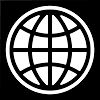
Thailand wird Mitglied der International Development Association (IDA).
1960-09-18 - 1960-09-25
Rom (Italien): 9th Annual International Stoke Mandeville Games, die als erste Paralympischen Sommerspiele gelten. Thailand nimmt erst ab 1984 an den Paralympics teil.
1960-09-21 - 1965-09-20

Raja Syed Harrun Putra ibni Syed Hassan Jamalullail (1920 – 2000) ist König (Yang di-Pertuan Agong) der Federation of Malaya (Persekutuan Tanah Melayu, ڤرسكوتوان تنه ملايو)
1960-09-24

Stapellauf des atomar angetriebenen US-Flugzeugträgers Enterprise. Es ist das größte Schiff der Welt. Die USA haben nun 17 Flugzeugträger.
Abb.: USS Enterprise (CVAN-65) im Golf von Tonkin (Vietnam), 1966-05
[Bildquelle: USN / Wikimedia. -- Public domain]
1960-10
Mönche setzen Flugblätter in Umlauf, auf denen die Regierung und die obersten Organe des Ordens kritisiert werden. Die Regierung bezeichnet ein solches Verhalten als für Mönche unangemessen.
1960-10-20
Ministerpräsident Sarit verkündet zwei Sechsjahrespläne, einen für die Verbesserung des Erziehungswesen, einen anderen für die wirtschaftliche Entwicklung. Die Wirtschaft soll für private und ausländische Investoren geöffnet werden. Die Menschen sollen zu guten Bürgern mit Moral und Kultur, mit Disziplin und Verantwortungsbewusstsein, und mit guter Gesundheit werden.
1960-11
In Surin (สุรินทร์) findet erstmals das Elephant Round-up (งานช้างและกาชาดสุรินทร์) statt.
Abb.: Lage von Surin (สุรินทร์)
[Bildquelle: OpenStreetMap. -- Creative Commons Lizenz (Namensnennung, share alike)]
Abb.: Surin Elephant Round-up (งานช้างและกาชาดสุรินทร์), 2008-11-22
[Bildquelle: Howard Stateman. -- http://www.flickr.com/photos/how3ird/3104526180/. -- Zugriff am 2012-04-06. -- Creative Commons Lizenz (Namensnennung, keine kommerzielle Nutzung)]
"The Surin Elephant Round-up usually takes place on the third weekend of November in Surin province (สุรินทร์), Isan (อีสาน), Thailand. It is of recent origin, first held in 1960. The people of Surin were traditionally excellent at capturing elephants in Cambodia, then training them as working animals. Civil war in Cambodia and the elephant's decreasing economic importance has forced the elephant handlers (mahouts) to turn to entertainment to make a living. The event consists of a series of shows displaying the strength and skill of the animals, such as football games and tugs of war.
Elephant Round-UpThe Elephant Breakfast is a small part of the festival and is held on the Friday morning. A procession of up to over 300 elephants (2005) start marching through Surin city from the railway station area toward the Elephant roundabout at the south end of the city on the Prasat road.
The elephants carry dignitaries and also some tourists who dismount their steeds on arrival. Some elephants carry mahouts in authentic battle outfits from the Thai - Khmer - Laos battles. Intermingled with the elephant procession are local school children and teachers in traditional dress, dancing and playing music.
Once all the elephants have arrived then the banquet can begin, the tables of fruits are quickly cleared by the large team of elephants. Whatever leftovers there may be is not lost, as the local people take the leftovers to their own homes.
On the following morning (Saturday) the elephants and mahoots congregate at the Elephant Stadium to the south east of the city centre. Here the main show is performed culminating in a re-enactment of the battles of a past century. The show is repeated on Sunday morning."
[Quelle: http://en.wikipedia.org/wiki/Surin_Elephant_Round-up. -- Zugriff am 2012-04-06]
1960-11-21

In Genf (Schweiz) stirbt der berüchtigte frühere Polizeichef Gen. Phao Sriyanond (เผ่า ศรียานนท์, 1910 - 1960).
Abb.: Lage von Genf
[Bildquelle: OpenStreetMap. -- Creative Commons Lizenz (Namensnennung, share alike)]
1960-11-21

Gescheiterter Militärputsch in Südvietnam
"On November 11, 1960, a failed coup attempt against President Ngô Đình Diệm (1901 - 1963) of South Vietnam was led by Lieutenant Colonel Vương Văn Đông and Colonel Nguyễn Chánh Thi (1923 - 2007) of the Airborne Division of the Army of the Republic of Vietnam (ARVN). The rebels launched the coup in response to Diệm's autocratic rule and the negative political influence of his brother Ngô Đình Nhu (1910 - 1963) and his sister-in-law Madame Nhu (1924 - 2011). They also bemoaned the politicisation of the military, whereby regime loyalists who were members of the Ngô family's covert Cần Lao Party were readily promoted ahead of more competent officers who were not insiders. Đông was supported in the conspiracy by his brother-in-law Lieutenant Colonel Nguyen Trieu Hong, whose uncle was a prominent official in a minor opposition party. The main link in the coup was Đông's commanding officer Thi, whom he persuaded to join the plot.
The coup caught the Ngô family completely off-guard, but was also chaotically executed. The plotters neglected to seal the roads leading into the capital Saigon to seal off loyalist reinforcements, and they hesitated after gaining the initiative. After initially being trapped inside the Independence Palace, Diệm stalled the coup by holding negotiations and promising reforms, such as the inclusion of military officers in the administration. In the meantime, opposition politicians joined the fray, trying to exploit Diệm's position. However, the president's real aim was to buy time for loyalist forces to enter the capital and relieve him. The coup failed when the 5th and 7th Divisions of the ARVN entered Saigon and defeated the rebels. More than four hundred people—many of whom were civilian spectators—were killed in the ensuing battle. These included a group of anti-Diệm civilians who charged across the palace walls at Thi's urging and were cut down by loyalist gunfire.
Đông and Thi fled to Cambodia, while Diệm berated the United States for a perceived lack of support during the crisis. Afterwards, Diệm ordered a crackdown, imprisoning numerous anti-government critics and former cabinet ministers. Those that assisted Diệm were duly promoted, while those that did not were demoted. A trial for those implicated in the plot was held in 1963. Seven officers and two civilians were sentenced to death in absentia, while 14 officers and 34 civilians were jailed. Diệm's regime also accused the Americans of sending Central Intelligence Agency members to assist the failed plot. When Diệm was assassinated after a 1963 coup, those jailed after the 1960 revolt were released by the new military junta."
[Quelle: https://en.wikipedia.org/wiki/1960_South_Vietnamese_coup_attempt. -- Zugriff am 2016-09-20]
1960-12

Das Metropolitan Museum of Art in New York (USA) zeigt eine Ausstellung von 1000 Jahren Thai-Kunst.
Abb.: Lage von New York
[Bildquelle: OpenStreetMap. -- Creative Commons Lizenz (Namensnennung, share alike)]
1960-12 - 1961-01



Mit Wissen der Thai Politiker landen Flugzeuge der Chinese National Air Force [CNAF - 中華民國空軍] in Bangkok zum Auftanken und versorgen dann die Kuomintang-Truppen [中國國民黨] in Möng Paliao (Burma) mit Truppen und Waffen.
Abb.: Lage von Möng Paliao
"During December 1960 and January 1961, I Fu-en’s 34th Special Operations Squadron routinely flew troops and weapons to Mong Paliao via refueling stops in Bangkok. In Bangkok, American Ambassador U. Alexis Johnson [1908 - 1997] told the Thai that Washington knew of those flights and asked that they prevent them. Responding to Thai concerns, I Fu-en proposed using less conspicuous upcountry airfields. Prime Minister Sarit refused that request but allowed flights to continue through Bangkok’s Don Muang Airport where ROC ]Republic of China] aircraft with dodgy flight plans frequently landed claiming "mechanical problems."" [Quelle: Gibson, Richard M. ; Chen, Wenhua [陳, 文華] <1944 - >: The secret army : Chiang Kai-Shek and the drug warlords of the golden triangle. -- Singapore : Wiley, 2011. -- 338 S. ;: Ill. ; 23 cm. -- ISBN 978-0-470-83018-5. -- S. 197. -- Fair use]
1960-12-03
Das Innenministerium veröffentlicht einen Greater Bangkok Plan.
1960-12-10

Der Laotische Ministerpräsident Prinz Suvanna Phuma (ເຈົ້າສຸວັນນະພູມາ, 1901 – 1984) flieht vor Kämpfen zwischen prowestlichen Einheiten und dem Pathet Lao (ປະເທດລາວ) nach Kambodscha.
Er erklärt:
"What I shall never forgive the United States for is the fact that it betrayed me . . . the Assistant Secretary of State (Parsons [James Graham Parsons, 1907 – 1991]) is the most nefarious and reprehensible of men. ... He and others like him are responsible for the recent shedding of Lao blood." [Zitiert in: Laos : war and revolution / ed. by Nina S. Adams and Alfred W. McCoy. -- New York : Harper & Row, 1970. -- 482 S. ; 21 cm. -- SBN 06-090221-3. -- S. 158. -- Fair use]
"In 1956, President Dwight D. Eisenhower (1890 - 1969) appointed Parsons as United States Ambassador to Laos, head of the U.S. embassy in Vientiane (ວຽງຈັນ),[1] with Parsons presenting his credentials on October 12, 1956. As ambassador to the Kingdom of Laos in the midst of the Laotian Civil War, Parsons is identified with the Eisenhower administration's support of the Royal Lao Government against the Pathet Lao (ປະເທດລາວ).[2] His mission to Laos ended February 8, 1958. Parsons continued to support the administration's Laotian policy in 1959-61, during which time he served as Assistant Secretary of State for East Asian and Pacific Affairs.[2] (He assumed office on July 1, 1959, and relinquished office March 30, 1961.) Testifying to the United States Congress in March 1961, Parsons said "the responsibility of the United States in Laos is indeed a very great one, and I hope there will be no misunderstanding of our firmness and steadiness."[2] In his 1965 book A Thousand Days, Arthur M. Schlesinger, Jr. (1917 - 2007) was highly critical of Ambassador Parsons' approach to Laos (Schlesinger favored American neutralism between the royalists and the rebels), saying that Parsons "drastically misconceived the situation".[2] Parsons never publicly responded to this or other similar criticisms." [Quelle: https://en.wikipedia.org/wiki/J._Graham_Parsons. -- Zugriff am 2018-08-28]
1960-12-11 - 1960-12-13

Quinim Pholsena (1915 – 1963) ist Ministerpräsident von Laos
1960-12-14
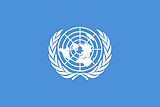
Die UNO-Generalversammlung beschließt die Declaration on the Granting of Independence to Colonial Countries and Peoples (United Nations Resolution 1514). Annahme mit 89 Ja und 9 Enthaltungen. Enthaltungen:
- Australien
- Belgien
- Dominikanische Republik
- Frankreich
- Portugal
- Spanien
- Südafrika
- Großbritannien
- USA
- "The subjection of peoples to alien subjugation, domination and exploitation constitutes a denial of fundamental human rights, is contrary to the Charter of the United Nations and is an impediment to the promotion of world peace and co-operation.
- All peoples have the right to self-determination; by virtue of that right they freely determine their political status and freely pursue their economic, social and cultural development.
- Inadequacy of political, economic, social or educational preparedness should never serve as a pretext for delaying independence.
- All armed action or repressive measures of all kinds directed against dependent peoples shall cease in order to enable them to exercise peacefully and freely their right to complete independence, and the integrity of their national territory shall be respected.
- Immediate steps shall be taken, in Trust and Non-Self-Governing Territories or all other territories which have not yet attained independence, to transfer all powers to the peoples of those territories, without any conditions or reservations, in accordance with their freely expressed will and desire, without any distinction as to race, creed or colour, in order to enable them to enjoy complete independence and freedom.
- Any attempt aimed at the partial or total disruption of the national unity and the territorial integrity of a country is incompatible with the purposes and principles of the Charter of the United Nations.
- All States shall observe faithfully and strictly the provisions of the Charter of the United Nations, the Universal Declaration of Human Rights and the present Declaration on the basis of equality, non- interference in the internal affairs of all States, and respect for the sovereign rights of all peoples and their territorial integrity."
[Quelle: http://en.wikisource.org/wiki/United_Nations_General_Assembly_Resolution_1514. -- Zugriff am 2014-03-31]
1960-12-13 - 1962-06-23

Prinz Boun Oum von Champasak (ເຈົ້າບຸນອຸ້ມ ນະ ຈຳປາສັກ, 1911/1912 - 1980) ist Ministerpräsident von Laos
Abb.: Prinz Boun Oum von Champasak (ເຈົ້າບຸນອຸ້ມ ນະ ຈຳປາສັກ), 1971
[Bildquelle: Dutch National Archives, The Hague, Fotocollectie Algemeen Nederlands Persbureau (ANEFO) / Wikimedia. -- Creative Commons Lizenz (Namensnennung, share alike)]
1960-12-20

Gründung der Front National de Libération / Mặt Trận Giải Phóng Miền Nam Việt Nam / National Liberation Front / Nationale Front für die Befreiung Südvietnams / Vietcong
"Program of the National Liberation Front of South Viet-Nam I. Overthrow the camouflaged colonial regime of the American imperialists and the dictatorial power of Ngo Dinh Diem, servant of the Americans, and institute a government of national democratic union.
The present South Vietnamese regime is a camouflaged colonial regime dominated by the Yankees, and the South Vietnamese government is a servile government, implementing faithfully all the policies of the American imperialists. Therefore, this regime must be overthrown and a government of national and democratic union put in its place composed of representatives of all social classes, of all nationalities, of various political parties, of all religions; patriotic, eminent citizens must take over for the people the control of economic, political, social, and cultural interests and thus bring about independence, democracy, well- being, peace, neutrality, and efforts toward the peaceful unification of the country.
II. Institute a largely liberal and democratic regime.
1. Abolish the present constitution of the dictatorial powers of Ngo Dinh Diem, servant of the Americans. Elect a new National Assembly through universal suffrage.
2. Implement essential democratic liberties: freedom of opinion, of press, of movement, of trade-unionism; freedom of religion without any discrimination; and the right of all patriotic organizations of whatever political tendency to carry on normal activities.
3. Proclaim a general amnesty for all political prisoners and the dissolution of concentration camps of all sorts; abolish fascist law 19/59 and all the other antidemocratic laws; authorize the return to the country of all persons persecuted by the American-Diem regime who are now refugees abroad.
4. Interdict all illegal arrests and detentions; prohibit torture; and punish all the Diem bullies who have not repented and who have committed crimes against the people.
III. Establish an independent and sovereign economy, and improve the living conditions of the people.
1. Suppress the monopolies imposed by the American imperialists and their servants; establish an independent and sovereign economy and finances in accordance with the national interest; confiscate to the profit of the nation the properties of the American imperialists and their servants.
2. Support the national bourgeoisie in the reconstruction and development of crafts and industry; provide active protection for national products through the suppression of production taxes and the limitation or prohibition of imports that the national economy is capable of producing; reduce custom fees on raw materials and machines.
3. Revitalize agriculture; modernize production, fishing, and cattle raising; help the farmers in putting to the plow unused land and in developing production; protect the crops and guarantee their disposal.
4. Encourage and reinforce economic relations between the city and country, the plain and the mountain regions; develop commercial exchanges with foreign countries, regardless of their political regime, on the basis of equality and mutual interests.
5. Institute a just and rational system of taxation; eliminate harassing penalties.
6. Implement the labor code: prohibition of discharges, of penalties, of ill-treatment of wage earners; improvement of the living conditions of workers and civil servants; imposition of wage scales and protective measures for young apprentices.
7. Organize social welfare: find work for jobless persons; assume the support and protection of orphans, old people, invalids; come to the help of the victims of the Americans and Diemists; organize help for areas hit by bad crops, fires, or natural calamities.
8. Come to the help of displaced persons desiring to return to their native areas and to those who wish to remain permanently in the South; improve their working and living conditions.
9. Prohibit expulsions, spoliation, and compulsory concentration of the population; guarantee job security for the urban and rural working populations.
IV. Reduce land rent; implement agrarian reform with the aim of providing land to the tillers.
1. Reduce land rent; guarantee to the farmers the right to till the soil; guarantee the property right of accession to fallow lands to those who have cultivated them; guarantee property rights to those farmers who have already received land.
2. Dissolve 'prosperity zones' and put an end to recruitment for the camps that are called 'agricultural development centers.' Allow those compatriots who already have been forced into 'prosperity zones, and 'agricultural development centers' to return freely to their own lands.
3. Confiscate the land owned by American imperialists and their servants, and distribute it to poor peasants without any land or with insufficient land; redistribute the communal lands on a just and rational basis.
4. By negotiation and on the basis of fair prices, repurchase for distribution to landless peasant or peasants with insufficient land those surplus lands that the owners of large estates will be made to relinquish if their domain exceeds a certain limit, to be determined in accordance with regional particularities. The farmers who benefit from such land and distribution will both be compelled to make any payment or to submit to any other conditions.
V. Develop a national and democratic culture and education.
1. Combat all forms of culture and education enslaved to Yankee fashions; develop a culture and education that is national, progressive, and at the service of the Fatherland and people.
2. Liquidate illiteracy; increase the number of schools in the fields of general education as well as in those of technical and professional education, in advanced study as well as in other fields; adopt Vietnamese as the vernacular language; reduce the expenses of education and exempt from payment students who are without means; resume the examination system.
3. Promote science and technology and the national letters and arts; encourage and support the intellectuals and artists so as to permit them to develop their talents in the service of national reconstruction.
4. Watch over public health; develop sports and physical education.
VI. Create a national army devoted to the defense of the Fatherland and the people.
1. Establish a national army devoted to the defense of the Fatherland and the people; abolish the system of American military advisers.
2. Abolish the draft system, improve the living conditions of the simple soldiers and guarantee their political rights; put an end to ill- treatment of the military; pay particular attention to the dependents of soldiers without means.
3. Reward officers and soldiers having participated in the struggle against the domination by the Americans and their servants; adopt a policy of clemency toward the former collaborators of the Americans and Diemists guilty of crimes against the people but who have finally repented and are ready to serve the people.
4. Abolish all foreign military bases established on the territory of Viet-Nam.
VII. Guarantee equality between the various minorities and between the two sexes; protect the legitimate interest of foreign citizens established in Viet-Nam and of Vietnamese citizens residing abroad.
1. Implement the right to autonomy of the national minorities: Found autonomous zones in the areas with a minority population, those zones to be an integral part of the Vietnamese nation. Guarantee equality between the various nationalities: each nationality has the right to use and develop its language and writing system, to maintain or to modify freely its mores and customs; abolish the policy of the Americans and Diemists of racial discrimination and forced assimilation. Create conditions permitting the national minorities to reach the general level of progress of the population: development of their economy and culture; formation of cadres of minority nationalities.
2. Establish equality between the two sexes; women shall have equal rights with men from all viewpoints (political, economic, cultural, social, etc.).
3. Protect the legitimate interest of foreign citizens established in Viet-Nam.
4. Defend and take care of the interest of Vietnamese citizens residing abroad.
VIII. Promote a foreign policy of peace and neutrality.
1. Cancel all unequal treaties that infringe upon the sovereignty of the people and that were concluded with other countries by the servants of the Americans.
2. Establish diplomatic relations with all countries, regardless of their political regime, in accordance with the principles of peaceful coexistence adopted at the Bandung Conference.
3. Develop close solidarity with peace-loving nations and neutral countries; develop free relations with the nations of Southeast Asia, in particular with Cambodia and Laos.
4. Stay out of any military bloc; refuse any military alliance with another country.
5. Accept economic aid from any country willing to help us without attaching any conditions to such help.
IX. Re-establish normal relations between the two zones, and prepare for the peaceful reunification of the country.
The peaceful reunification of the country constitutes the dearest desire of all our compatriots throughout the country. The National Liberation Front of South Viet-Nam advocates the peaceful reunification by stages on the basis of negotiations and through the seeking of ways and means in conformity with the interest of the Vietnamese nation.
While awaiting this reunification, the governments of the two zones will, on the basis of negotiations, promise to banish all separatist and warmongering propaganda and not to use force to settle differences between the zones. Commercial and cultural exchanges between the two zones will be implemented the inhabitants of the two zones will be free to move about throughout the country as their family and business interests indicate. The freedom of postal exchanges will be guaranteed.
X. Struggle against all aggressive war; actively defend universal peace.
1. Struggle against all aggressive war and against all forms of imperialist domination; support the national emancipation movements of the various peoples.
2. Banish all warmongering propaganda; demand general disarmament and the prohibition of nuclear weapons; and advocate the utilization of atomic energy for peaceful purposes.
3. Support all movements of struggle for peace, democracy, and social progress throughout the world; contribute actively to the defense of peace in Southeast Asia and in the world."
[Zitiert in: Vietnam and America : a documented history / [edited] by Marvin E. Gettleman [and others]. -- rev. and enlarged 2. ed. -- New York : Grove Press, 1995. -- 560 S. ; 25 cm. -- ISBN 0-8021-3362-2. -- S. 189 - 192. -- Fair use]
1960-12-27
Erstmals überholt Kautschuk den Reis als wichtigstes Exportprodukt Thailand. Der Kautschukexport in den ersten 11 Monaten 1960 hat einen Wert von 2,38 Milliarden Baht gegenüber Reis mit 2,35 Milliarden Baht.
1960-12-30

Ein Dekan der Thammasat Universität (มหาวิทยาลัยธรรมศาสตร์ ) hat während eines Deutschlandaufenthalts mehrere Frauen sexuell belästigt und hat in einem Hotel, in dem gleichzeitig das Königspaar logierte, nackt geschlafen. Der Dekan muss zurücktreten.
1960-12-30

Die USA-Armee stellt das Kampfflugzeug McDonnell F-4 Phantom II in Dienst.
Abb.: McDonnell F-4 Phantom II beim Bombenabwurf über Vietnam, 1970/1971
[Bildquelle: USN / Wikimedia. -- Public domain]
ausführlich: http://www.payer.de/thailandchronik/ressourcen.htm
Zu Chronik 1961